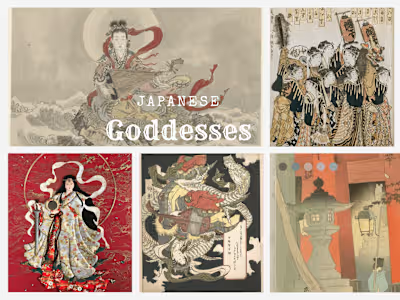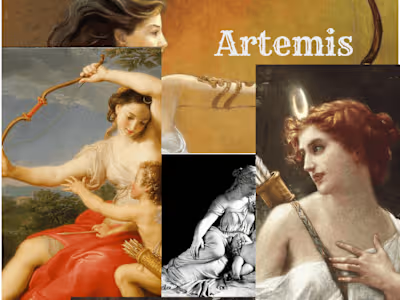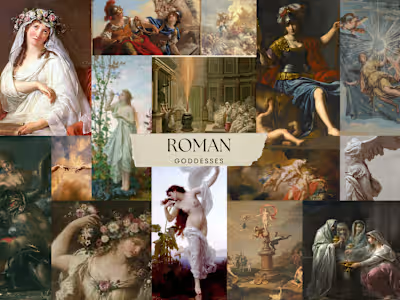Goddesses of Hinduism: The Daughters of Divinity
Parvati: The Goddess of Love and Devotion

Source: Daily Art Magazine
In Hinduism and within its mythology exists a goddess who nurtures the universe and all life found within it: Parvati, the mother goddess of love, fertility, and devotion, holds a high and esteemed position within Hinduism. As the daughter of the Himalayas, the compassion and nurturing nature that the goddess possesses is what bridges Hindus all around the world to the divine.
Overview of Parvati
The name Parvati in Sanskrit means mountain, which not only makes sense because she is known as the "daughter of the mountains", but also because it's a name that speaks to the strength and stability she provides to all those who worship her.
According to Hindu scripture, the Great Goddess is the reincarnation of the first wife of Shiva, Sati. However, it's important to know that the mother goddess has been reincarnated many times and taken on various forms, from the fearsome goddess of death, Kali, to the devoted goddess of food and nourishment, Annapurna, each reincarnated form of Parvati represents a facet of her vast and divine power.

Source: Pinterest
Titles
Great Goddess
Divine Energy
Mother of the World
Light
Abilities
As the mother goddess of love, fertility, and devotion, it serves as no surprise that Parvati is the goddess to pray to when it comes to matters of bringing joy and abundance into the lives of families (Wikipedia Contributors). Whether through bestowing blessings upon couples looking to have children or bringing love and understanding to those hoping to have marital happiness. The same feminine energy that breathes life into the cosmos, is the very same, yet divine energy that is believed by many to answer the prayers of all those who confide in the mother goddess.
However, Parvati’s most formidable strength lies in her ability to assume various forms (“Parvati – New World Encyclopedia”), whether it is in the form of the powerful Durga, Uma the devoted, or Gauri, who is known for her grace, the ability to shapeshift makes it possible for Parvati to fulfill the unique needs of her devout followers.
Characteristics
In most depictions of Parvati, she is often characterized by dark hair that flows past her waist, fair skin, and almond-shaped eyes and is adorned in a variety of gold jewelry around her ankles, along her wrists and neck, and sometimes even atop her head. Always in traditional Indian attire, Parvati typically wears flowing saris in colors that are often regal and royal.
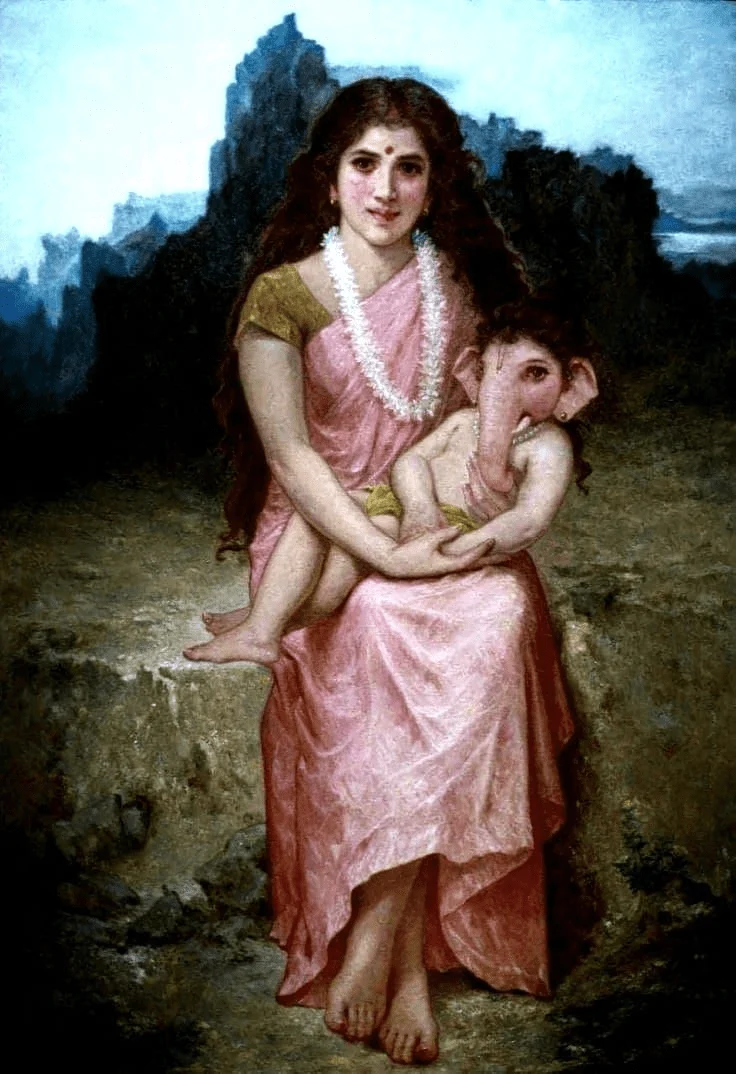
Source: Pinterest
Traits
All the things that make Parvati a devoted consort, a loving mother, and a compassionate deity are the very virtues that resonate with those who adore her. Her unwavering loyalty to Shiva, relentless determination to keep her family safe, and her faith serve as inspiration to her followers to become stronger in character and more compassionate in the way in which they love. Parvati's revered influence transcends time, offering guidance and inspiration to those who see her as a beacon of hope.
Symbols
Lotuses represent spiritual enlightenment and purity and in almost every depiction of Parvati, they are found nestling in the safety of her palms. Alongside the lotus, other symbols associated with the great goddess include the trident and the lion. The trident representing creation and preservation is associated with the sacred union of Parvati and Shiva. As for the lion, it not only serves as a chariot for the goddess but also symbolizes the role she plays in courageously protecting her followers against harm.
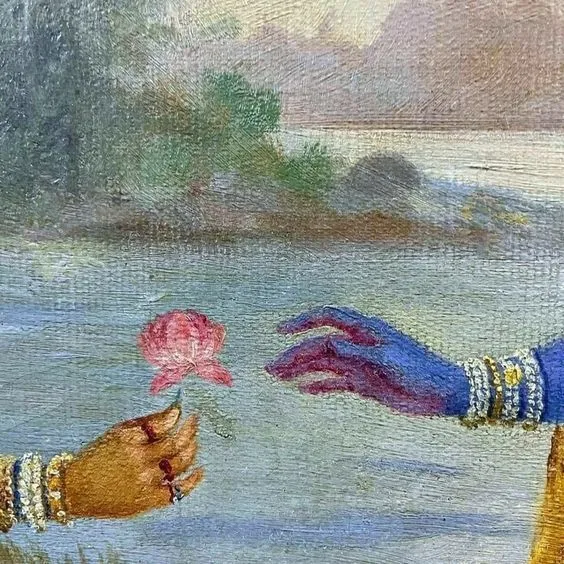
Source: Pinterest
Festivals and Rituals
From Diwali to Maha Shivaratri, Hindus celebrate Parvati in many different festivals, but the festival most closely associated with the mother goddess is Teej. During Teej, women honor the bond between the Goddess Parvati and Lord Shiva by fasting and praying to Parvati for the well-being of their husbands.
Since the festival takes place between July and September, it's also a time to commemorate the monsoon season, as the heavy rain offers a much-needed reprieve from the summer heat. During the lively celebrations, women wear traditional clothing in various shades of green, singing and dancing, praising the mother goddess. Some even play out amongst the fields to swing on flower-adorned swings in excitement for the coming rain.
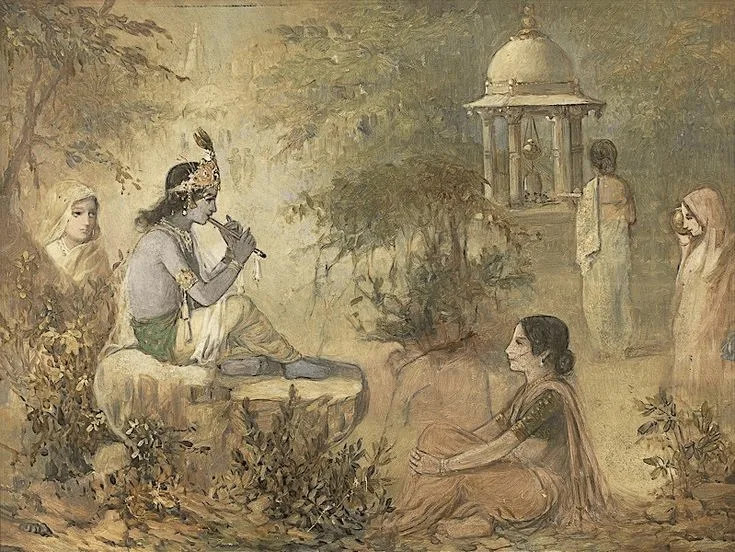
Source: Pinterest
Legends associated with Parvati
There are various legends surrounding Parvati, and because she has reincarnated many times and is a reincarnation of another goddess, navigating her legends can sometimes be overwhelming. However, the legends that speak to her divinity are the story of her birth, which is said to be from the ashes of Sati, the legend of her union with Lord Shiva, and most strikingly, Parvati's transformation into the formidable Kali.
Origin story
Legends vary amongst regions and religious traditions, and as time passes, they seem to gain a life of their own. According to legend, Sati was devoted to Lord Shiva and could not bear the shame of her father disrespecting him due to Shiva's unconventional and nonconforming lifestyle. Overwhelmed by grief, Sati self-immolated herself and was then reborn as the Goddess Parvati (Wikipedia Contributors).
It is important to note that there are various legends of the birth of Parvati. Some believe her birth came from the union of Himavan, the guardian and king of the Himalayas, and his queen consort, Menavati. Others associate Parvati’s birth with the primordial spiritual energy in Hinduism, Adi Shakti. Regardless of the version you believe in, each narration adds depth and nuance to the divine mother, enriching her intrigue.
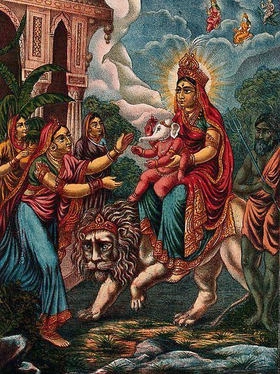
Source: Manidvipa
Parvati and Shiva
Parvati who is believed to be a reincarnation of Sati, shared not only souls with the daughter of Daksha but also the same devotion to Lord Shiva. So much so, that in hopes of capturing the affection of Lord Shiva, Parvati renounced worldly attachments and immersed herself in prayer and fasting. It was said that her determination and unwavering commitment not only gained the recognition of Lord Shiva but also earned his affection (“Parvati”). Their divine union serves as a symbol to many that passion, perseverance, and commitment whether that be spiritually or to your partner are things to strive for to have fulfilling relationships.

Source: Minneapolis Institute of Art
Transforming into Kali
During the golden age, Raktabija, a formidable demon, laid siege on the world alongside other demons at the command of demon kings Shumbhu and Nishumbhu. However, Raktabija had his boons, which allowed him to multiply with every drop of his blood that fell on the ground. This ability had all the gods in fear, and the gods then went and asked Lord Brahma to save them, but he said that only a woman could defeat him. And despite having no interest in defeating Raktabija, the goddess Parvati took on the duty at the insistence of Lord Shiva.
Parvati defeated the demons and killed the demon kings Shumbhu and Nishumbhu with her tridents. Throughout the fight, her anger only increased until only Raktabija was left, and by then, her anger had become so lethal that it all but consumed her, and thus she transformed into the formidable Kali. Kali then went on to finish the battle and save the world by ferociously and unyieldingly defeating Raktabija by killing his duplicates, collecting his blood drops in a bowl, preventing his blood from spreading further (“Parvati”) and then proceeded to chop off his head.
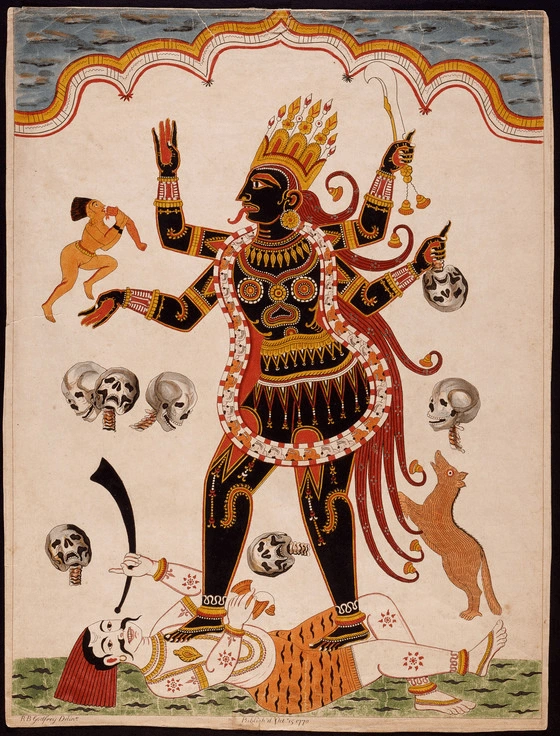
Source: LACMA
Influences of other religions/cultures on Parvati
The worship of the Mother Goddess is not just found within Hinduism because interactions with other religions and cultures have influenced her perception around the world. Within certain groups of Buddhism, the Buddhist equivalent of Parvati is the Goddess Tara, who is associated with compassion and enlightenment. Additionally, when Parvati takes the powerful form of the goddess Durga, many may be reminded of the Mahayana Buddhist deity Guanyin, who is known for her compassion and role as a protector against evil, paralleling Parvati’s depiction as a powerful and protective figure (“Parvati – New World Encyclopedia”).
Modern appearances
Parvati’s divine presence extends to modern times, where she remains a significant fixture appearing in diverse cultural and artistic expressions. The mother goddess has inspired artists who depict her in sculptures, paintings, and religious iconography. Dance performances like the Bharatanatyam often include dedicated pieces to honor Parvati. Musical compositions are composed and performed to evoke her divine qualities, and theatrical productions, dramas, and modern adaptations bring her stories to life on stage. Through these varied cultural and artistic expressions, Parvati’s mythology and teachings continue to resonate with people in modern times (“Parvati”).
Final thoughts
The Goddess of Love and Devotion embodies a rich tapestry of legends, and despite it being difficult to navigate her legends since she is a reincarnated form of other gods, and because she can take many different forms: all the legends that involve her only add to her reverence. From her conception to her divine union with Lord Shiva, and then her transformation as Kali, Parvati symbolizes the eternal feminine power within the universe. Her enduring presence in worship and cultural expressions ensures the integral part she plays in religious practices and rituals. Parvati’s essence embodies the divine feminine energy, nurturing and empowering devotees throughout their spiritual journeys.
References
“Parvati.” Mythopedia, mythopedia.com/topics/parvati.
“Parvati – New World Encyclopedia.” Www.newworldencyclopedia.org, www.newworldencyclopedia.org/entry/Parvati.
Wikipedia Contributors. “Parvati.” Wikipedia, Wikimedia Foundation, 20 Sept. 2019, en.wikipedia.org/wiki/Parvati.
Radha: The Goddess of Love, Tenderness, Compassion, and Devotion

Source: Tallenge Store
Radha is a prominent and revered Hindu goddess who holds a special place in the hearts of millions of devotees worldwide. As the eternal lover and divine consort of Lord Krishna, Radha symbolizes pure love, devotion, and selflessness, embodying the highest ideals of loyalty. The multifaceted aspects of Radha’s character and significance are celebrated through numerous festivals and rituals dedicated to her. In essence, Radha is an embodiment of the divine feminine, representing the transformative power of love and devotion. Her timeless story continues to captivate the hearts and minds of millions, offering a glimpse into the eternal nature of the soul and the power of divine love to uplift and transform the human spirit.
Overview of Radha
Radha occupies a central and revered position in Hindu scriptures, particularly within the context of Lord Krishna’s life and teachings. As per religious belief, she is considered an incarnation of the goddess Lakshmi, associated with wealth and prosperity (“Radha”). Radha’s love for Krishna is regarded as the epitome of devotion, celebrated for its unparalleled depth and intensity. In deference to her exalted status and role as Krishna’s beloved, she is often called “Radharani,” which translates to “Queen Radha.” This title underscores the significance and divine connection between Radha and Krishna (“Radha”).
Radha’s devotion and love for Krishna inspire many Hindu followers, and she remains an influential and revered figure in the religion’s rich history and traditions.

Source: Pinterest
Titles
Queen of Vrindavan
Giver of Victory
The Mother of All
Abilities
Radha possesses extraordinary abilities and qualities that render her an awe-inspiring goddess. Her divine attributes are deeply revered and include an unparalleled sense of devotion, unmatched compassion, ethereal beauty, and a profound role as a uniting force between mortals and the heavenly. Radha’s love and affection for Lord Krishna transcends all worldly limits, inspiring devotees seeking a deep connection with the divine. Her unwavering commitment to Krishna exemplifies the highest form of devotion, characterized by selflessness and steadfast loyalty. Beyond her attributes, Radha functions as a unifying force, bridging the gap between mortal beings and the divine realm. She expertly facilitates the union of individual souls with the Supreme Soul, guiding devotees toward spiritual enlightenment and realization (“Radha”). Radha is a shining paragon of spiritual excellence and a beacon of hope for all those seeking a deeper connection with the divine.
Characteristics
Radha’s physical appearance and overall demeanor are eloquently captured in numerous scriptures and artistic depictions. She is often depicted as possessing a youthful and radiant complexion, accompanied by large, captivating eyes that reflect her profound love for Krishna. Her long, lustrous hair, adorned with delicate flowers, cascades gracefully down her shoulders, symbolizing her purity and divine grace. Radha’s attire, adorned with vibrant garments and exquisite jewelry, emphasizes her divine allure and elegance, making her a wonder to behold.

Source: Artsandculture
Traits
Radha is known for her exceptional qualities and unwavering devotion to Lord Krishna. Her impeccable character is characterized by personality traits that inspire loyalty and admiration among her followers. These traits include unconditional love, humility, sacrifice, and emotional depth, all serving as a testament to the transformative power of love. Radha’s love for Krishna is absolute and boundless, surpassing all limitations. It is a love that transcends worldly boundaries and showcases the profound depths of the human capacity for love.
Despite being the object of Krishna’s affection, Radha remains remarkably humble and modest. Her humility is essential to her character, reflecting her understanding of the divine and her role as a devotee. She epitomizes selflessness, and her love is characterized by sacrifice and surrender. She willingly renounces her desires and aspirations, prioritizing Krishna’s happiness above hers. Her actions demonstrate the profound depths of her love and devotion.
Radha’s emotional depth is another striking aspect of her personality (“The Tale of Radha and Krishna – a Benchmark of Love”). She experiences various emotions, from profound longing and separation in Krishna’s absence to ecstatic union in his presence. These emotional fluctuations reflect the complexities of the human heart and its yearning for divine love. Radha’s devotion to Lord Krishna is a source of inspiration and admiration for many, and her exemplary qualities continue to inspire devotees worldwide.
Symbols
Radha is often depicted with various symbols that carry profound meaning and significance. These symbols reflect her elevated consciousness and divine qualities and reinforce her sacred bond and divine love with Lord Krishna. One of the most prominent symbols associated with Radha is the lotus, a symbol of purity and spiritual enlightenment. Radha is often depicted holding a lotus, representing her embodiment of divine virtues and elevated consciousness. Another symbol of Radha is the peacock feather, which adorns her hair. The peacock feather symbolizes beauty, grace, and divinity and represents Radha’s deep connection with Lord Krishna. As Lord Krishna is often depicted wearing a peacock feather on his crown, this symbol reinforces their sacred bond and divine love.
Finally, the flute is an iconic symbol associated with Lord Krishna and holds significance for Radha (“The Tale of Radha and Krishna – a Benchmark of Love”). The flute symbolizes Krishna’s divine music and ability to attract and enchant devotees. As Radha is inseparable from Krishna, the flute symbolizes Radha’s union with her beloved and their divine love.
These symbols associated with Radha carry significant meaning and reflect the divine qualities and sacred bond between Radha and Lord Krishna.
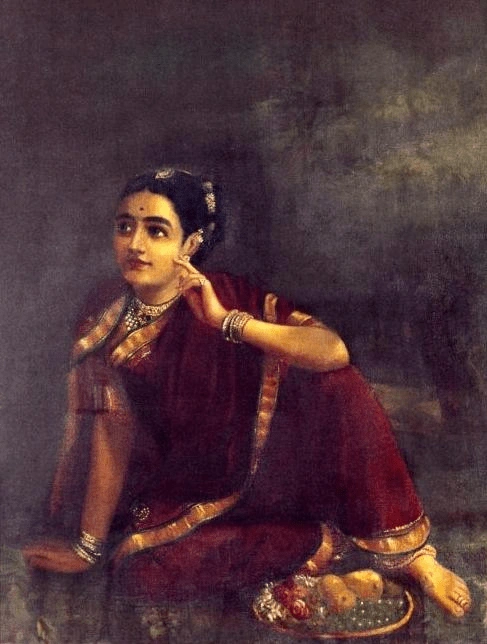
Source: Wikipedia
Festivals and Rituals
The devotees of Radha express their deep reverence, love, and gratitude towards her through a variety of religious festivals and rituals. One of the most significant festivals is Radhastami, which is observed on the eighth day of the lunar month of Bhadrapada. On this auspicious occasion, devotees engage in fasting, sing devotional songs, and participate in ecstatic dances, known as Rasa Lila, to commemorate the appearance of Radha in the mortal realm. In addition to Radhashtami, devotees perform Radha-Krishna puja, offering worship to both Radha and Krishna as a divine couple. They recite Radha mantras, invoking her blessings and seeking her divine grace. Furthermore, the devotees read and contemplate Radha’s pastimes and divine interactions with Krishna as described in sacred scriptures such as the Bhagavata Purana (“The Tale of Radha and Krishna – a Benchmark of Love”).
These festivals and rituals provide devotees with ample opportunities to deepen their connection with Radha, express their love, and engage in devotional practices centered around her divine presence. The participation in these rituals and celebrations is believed to immerse devotees in Radha’s divine love and impart spiritual insights from her sacred teachings and experiences. Indeed, such observances serve as a profound expression of devotion and gratitude towards the divine feminine, Radha.
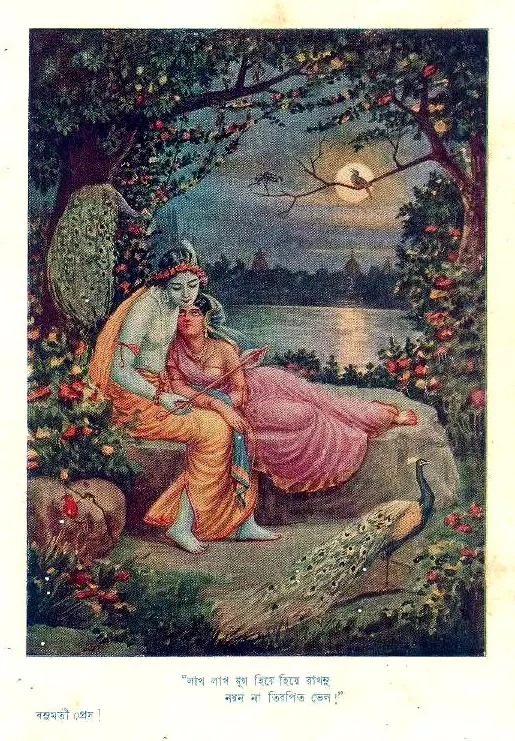
Source: Pinterest
Legends associated with Radha
Radha, the revered Hindu goddess, and beloved of Lord Krishna, occupies a paramount position in Hindu mythology and devotion. Her miraculous origins, boundless love for Krishna, and deep-rooted loyalty testify to the profoundness of faith and spirituality in Hinduism. Her significance in Hinduism is unparalleled, and her legends reflect the highest form of devotion and love.
Origin story
The origin tale of Radha is steeped in an air of enigma, its intricacies varying across diverse sources and traditions. However, most believe that Radha was born as the daughter of King Vrishabhanu and Queen Kirti (“Radha”), her exceptional birth occurring when she emerged from a lotus flower that blossomed in the mystical lake known as Radhakund, situated in the revered land of Vrindavan (“About Radha Rani: A Beautiful Hindu Goddess of Vrindavan – Rudra Centre”). This divine inception is a powerful testament to Radha’s exceptional nature and deep-seated connection with Lord Krishna.
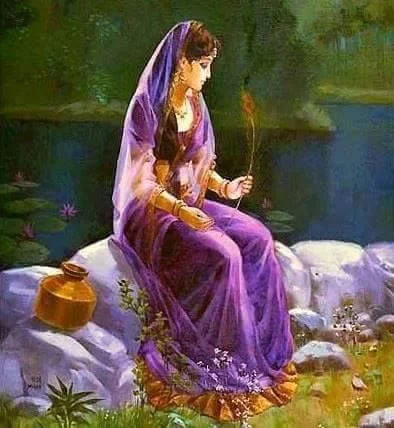
Source: Pinterest
Radha and Krishna
One of the most cherished and esteemed legends in Hindu mythology is that of the divine love shared between the celestial beings Radha and Lord Krishna. The boundless love and unwavering devotion that Radha had for Krishna are considered to symbolize the concept of eternal love. Their cosmic love is believed to transcend all worldly attachments, embodying the union of the individual soul (Radha) with the Supreme Soul (Krishna)(“The Tale of Radha and Krishna – a Benchmark of Love”). This divine love story continues to inspire countless devotees, illustrating the transformative power of true love and the potential for a profound spiritual connection with the divine.
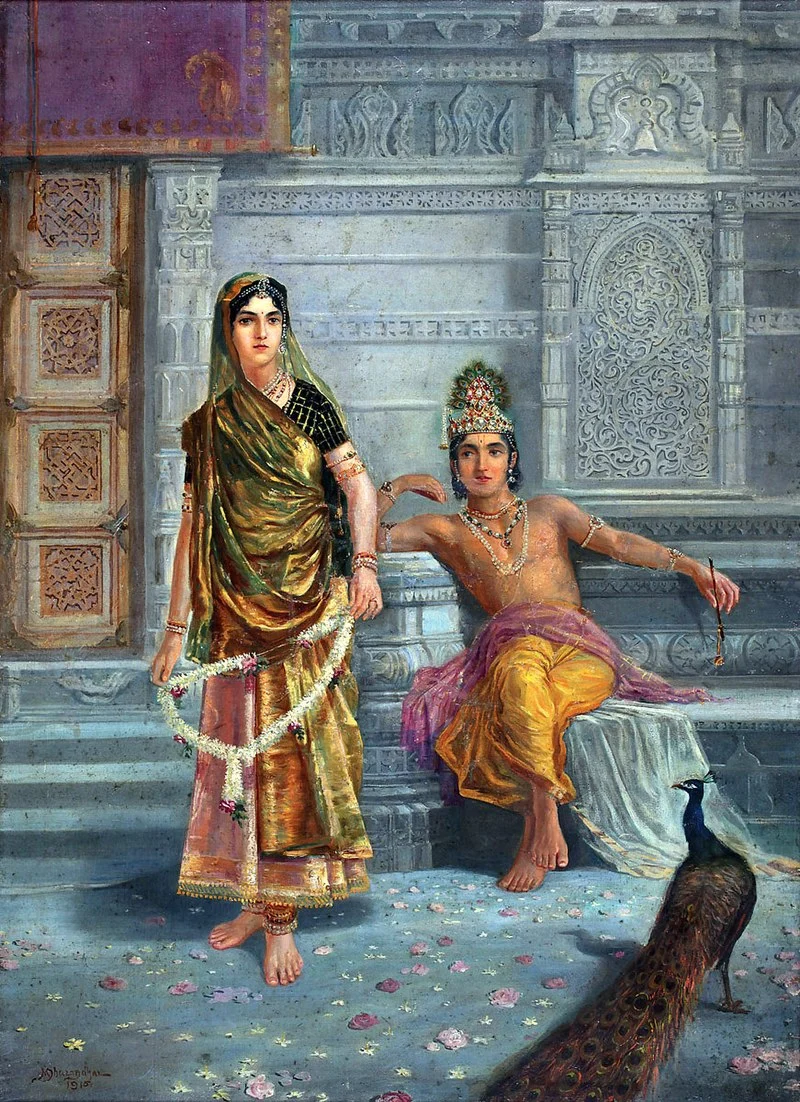
Source: Wikipedia
Radha’s Devotion
Radha stands as a central figure in the divine pastimes of Krishna. As the playful Krishna engaged in merriment with his cowherd friends in the idyllic land of Vrindavan, Radha added depth, beauty, and enchantment to his pastimes, making them more vibrant and meaningful just by being there. Radha's participation in Krishna's pastimes symbolizes their divine connection's inseparable nature and highlights their profound love. Radha's interactions with Krishna during these pastimes serve as a source of inspiration and devotion for countless devotees, who find solace and joy in witnessing the divine union of Radha and Krishna. Her role in Krishna's pastimes extends beyond being a mere companion; she embodies the essence of devotion, love, and spirituality. Her unwavering affection for Krishna and her presence during his divine play exemplifies the deep and inseparable bond between the individual soul (Radha) and the Supreme Soul (Krishna)(“The Tale of Radha and Krishna – a Benchmark of Love”).
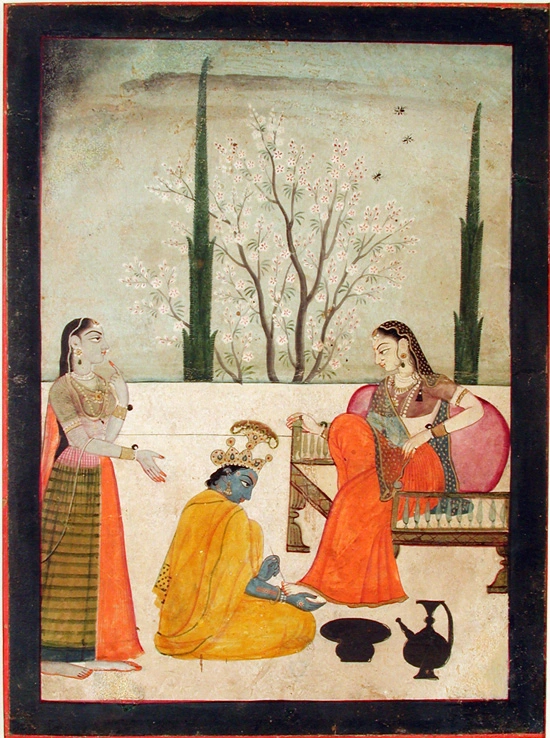
Source: Wikipedia
Influences of other religions/cultures on Radha
Diverse religious and cultural influences have shaped Radha’s portrayal and recognition. In the context of Vaishnavism, a prominent Hindu tradition, Radha is revered as the ultimate embodiment of devotion and divine love. Her significance in this tradition stresses her role as Lord Krishna’s beloved and companion (“Radha”). However, it is crucial to acknowledge that Radha’s depiction may differ in other regional and religious traditions. Depending on local customs, beliefs, and cultural influences, her image and traits may be interpreted and represented distinctively, reflecting the diversity of worship practices and the incorporation of local folklore.
These variations in Radha’s portrayal and recognition highlight the dynamic and evolving nature of religious and cultural traditions, facilitating the integration of diverse perspectives and expressions of devotion. Despite these differences, Radha continues to be revered and celebrated for her unwavering commitment and love for Lord Krishna across various religious and cultural contexts.
Modern appearances
Radha remains an enigmatic and revered figure in contemporary times, receiving adoration and worship from devotees worldwide. Within the Vaishnava tradition, she holds a significant and unparalleled place in devotional practices, as her divine love story with Krishna continues to inspire and captivate hearts. Devotees express their devotion towards Radha through various means, including constructing elaborate temples dedicated to her and Krishna. These sacred spaces serve as focal points for devotees to offer prayers, perform rituals, and engage in communal worship, thus fostering a deep spiritual connection and reverence.
Moreover, Radha’s divine love story finds expression through various cultural performances, such as dance dramas and music compositions (“Radha”), that bring to life the enchanting tales of Radha and Krishna. These artistic interpretations serve as a powerful medium for devotees to connect with their faith and evoke a profound sense of devotion, love, and spiritual connection among the audience. The impact of Radha’s story is timeless, and it continues to inspire generations of devotees worldwide, highlighting the enduring power of divine love and devotion.
Final thoughts
The venerated Hindu goddess Radha, the divine consort of Lord Krishna, holds a place of great reverence in the hearts of devout followers of Hinduism. Her character is marked by an unwavering love and devotion to her divine partner, a characteristic celebrated and upheld in the many legends and stories surrounding her. Radha's origin story and her role in the pastimes of Krishna serve as powerful reminders of the depth and significance of her character. At the same time, the influences of other religions and cultures have shaped how she is perceived and recognized. Today, Radha's legacy endures as a beacon of inspiration for devotees, with her divine love story and teachings serving as a benchmark for eternal devotion. Indeed, the transformative power of love and the potential for a profound connection with the divine are but a few of the many lessons that can be gleaned from the life and teachings of Radha, the beloved goddess of unconditional love.
References
“About Radha Rani: A Beautiful Hindu Goddess of Vrindavan - Rudra Centre.” Www.rudraksha-Ratna.com, www.rudraksha-ratna.com/articles/goddess-radha.
“Radha.” Wikipedia, 15 July 2022, en.wikipedia.org/wiki/Radha.
“The Tale of Radha and Krishna – a Benchmark of Love.” Www.exoticindiaart.com, www.exoticindiaart.com/article/the-tale-of-radha-and-krishna-a-benchmark-of-love-/.
Kali: The Goddess of Death
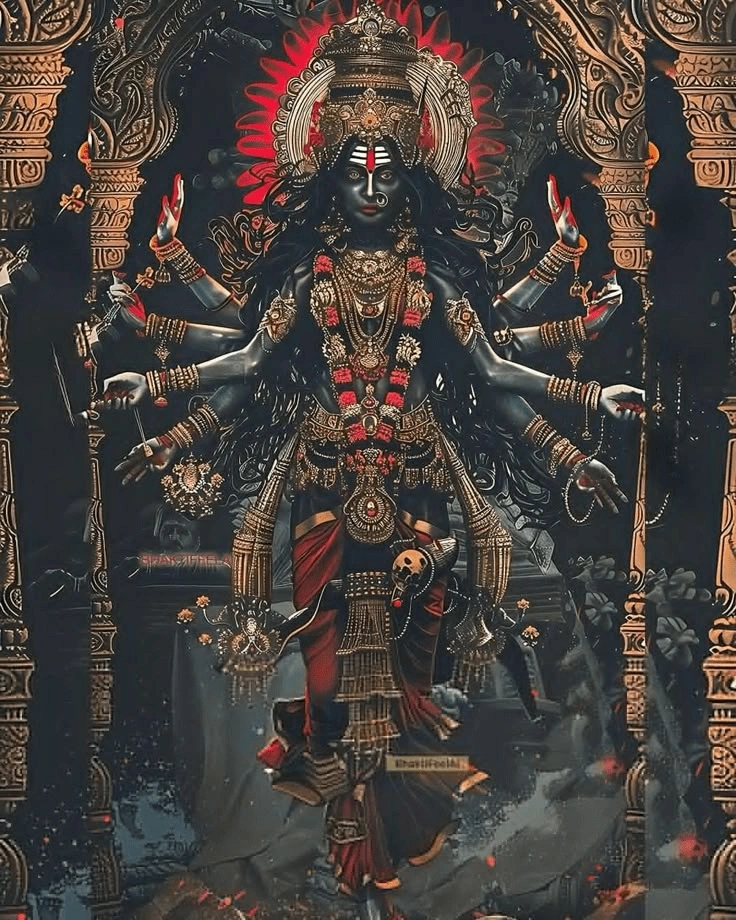
Source: Pinterest
The illustrious pantheon of Hindu deities consists of many awe-inspiring figures; among them, Kali reigns supreme. This fierce goddess, also known as Kalika, commands reverence and respect due to her association with time, doomsday, death, and destruction (Wikipedia Contributors). According to legend, Kali was created by Durga, the mighty warrior goddess, and has since been celebrated for her slaying of the demon Mahishasura and the legendary dance of destruction. It is no surprise, therefore, that the goddess of death is held in such high esteem by devotees of Hinduism.
Overview of Kali
Kali, also called Mahakali, is a prominent deity revered in Hindu mythology for her immense power and significance. She represents the ancient force that lies before creation and manifests as the annihilating force that dissolves the universe. The portrayal of Kali is that of a ferocious goddess with a formidable appearance, yet she encapsulates the potential for liberation and spiritual awakening. Her dark complexion and intense demeanor challenge the conventional notions of beauty and mirror the transformative nature of existence. In essence, Kali embodies the ultimate reality, and her worship is a testament to her profound spiritual significance in Hindu culture.
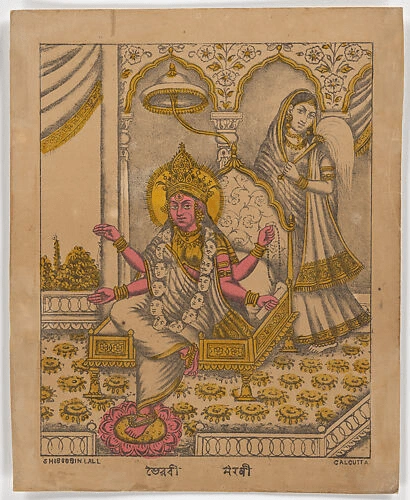
Source: Metmuseum
Titles
Great Kali
The Dark One
The Redeemer of the Universe
Killer of Chanda and Munda
Abilities
Kali has exceptional abilities that showcase her immense power and influence. In depictions of her, she often wields a sword, which symbolizes the cutting of ignorance and the destruction of ego. And in other portrayals, Kali is illustrated holding a severed head representing the triumph over ignorance and attachment to worldly desires. This powerful imagery shows Kali's role as the destroyer of illusion and ignorance, paving the way for spiritual growth and transformation (Natesan).
Furthermore, Kali's standard depiction of standing on the body of Lord Shiva conveys her supremacy over time and the transient nature of existence. This powerful imagery signifies her ability to dissolve all things and highlights her dominion over creation, preservation, and dissolution cycles. Kali's divine role as the destroyer of illusion and ignorance is a testimony of her immense power, and her depiction of standing on Lord Shiva's body is a reminder of her everlasting reign and influence over the universe (Cartwright).
Characteristics
The image of Kali is striking and evocative, capturing the essence of her fierce and transformative nature. She is often portrayed with dark blue or black skin, symbolizing the vastness of the night sky and the limitless potential for both creation and destruction. Her hair is typically shown as messy and matted, representing her wild and untamed energy, free from the constraints of societal norms (Natesan). The piercing red color of her eyes signifies her fierce determination and unyielding nature. Kali's overall demeanor exudes raw power and a sense of liberation from conventional beauty standards, emphasizing reality's transformative and non-dualistic nature.
Her physical representation challenges traditional notions of beauty, compelling us to view the world through a new lens.
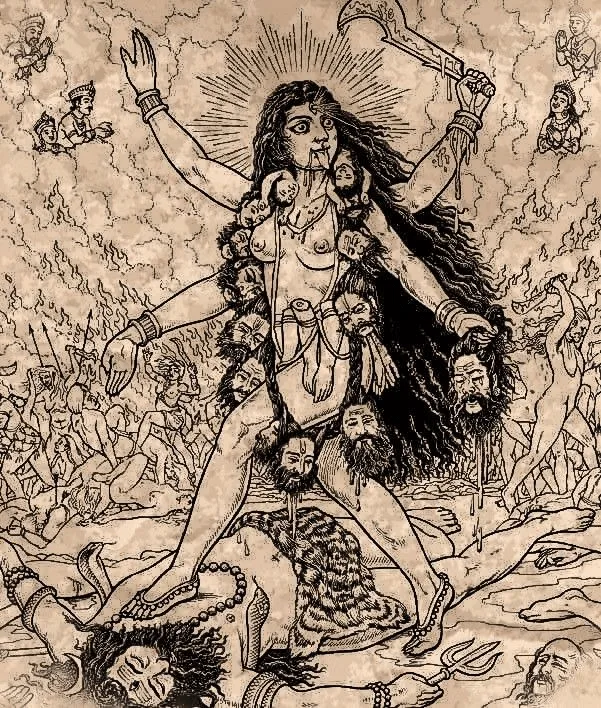
Source: Pinterest
Traits
Kali's personality is a unique blend of fearlessness, ferocity, and untamed energy that embodies the creative and destructive forces of the universe. She symbolizes the cyclical nature of existence, representing the power and intensity that can destroy and create. Her fierce character fearlessly confronts and annihilates evil (Natesan), protecting her devotees from harm and upholding righteousness with unwavering determination.
However, while Kali's intense aspect may appear intimidating, she also exhibits compassion and liberation. Her heart is reflected in her ability to liberate individuals from the bondage of ignorance and attachment, guiding them toward spiritual transcendence. Kali encourages her devotees to confront their fears, embrace the impermanence of life, and recognize the eternal essence within themselves (Cartwright).
Through her transformative influence, Kali catalyzes growth and transformation in those who seek her guidance. She embodies the power of change and is a testament to the soul's eternal nature. As such, she remains a revered figure in Hindu mythology and an inspiration to those who seek to live a life of compassion, courage, and spiritual growth.
Symbols
Kali is linked with a collection of symbols. The garland of severed heads often adoring her neck in countless illustrations is a powerful emblem of the conquest of ego and liberation from worldly attachments. Each severed head represents the triumph over individualistic desires and the realization of the interconnectedness of all beings (Natesan). Moreover, this striking symbol embodies the transcendence of the limitations of conventional understanding, allowing seekers to experience the unity and non-dual nature of existence.
Furthermore, the sword Kali wields in her hand is a powerful symbol representing the cutting of ignorance and the destruction of negativity. It signifies her power to sever the ties of delusion and ignorance that bind individuals, enabling them to attain spiritual awakening and transcendence (Cartwright). This symbol is a testament to the transformative power of Kali, who helps individuals to overcome the limitations of the material world and achieve spiritual liberation.
Another symbol associated with Kali is her fierce countenance, with her tongue sticking out. This portrayal represents her power to consume and dissolve all dualities, transcending the limitations of conventional understanding. It symbolizes her ability to annihilate illusions, ego-driven identities, and the notion of separateness, enabling seekers to experience the unity and non-dual nature of existence (Story).
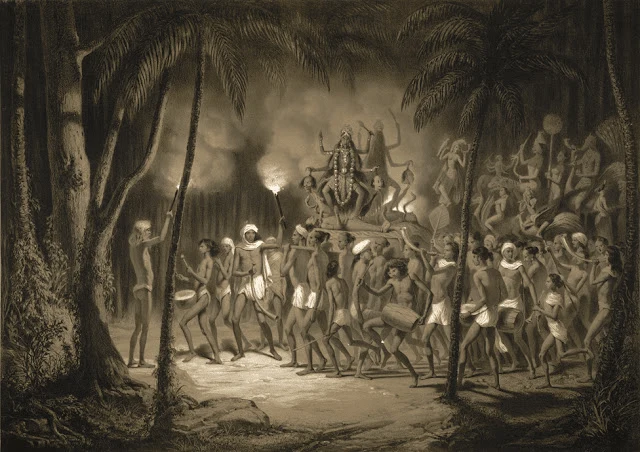
Source: Old Indian Arts
Festivals and Rituals
The goddess Kali is the subject of numerous vibrant festivals and rituals in her honor. Among these, Kali Puja stands out as one of the most significant. Observed on the new moon night of the Hindu month Kartik, this sacred occasion sees devotees gathering together to offer prayers, chant mantras, and perform elaborate rituals to invoke Kali's divine blessings. The atmosphere is filled with devotion and reverence as worshippers seek the goddess's grace and protection (Natesan). These festivals and ceremonies provide a dedicated time for devotees to connect with Kali's energy, express their devotion, and seek her blessings. They create a vibrant and spiritually enthusiastic atmosphere, celebrating the power and transformative nature of Kali in the lives of her followers.
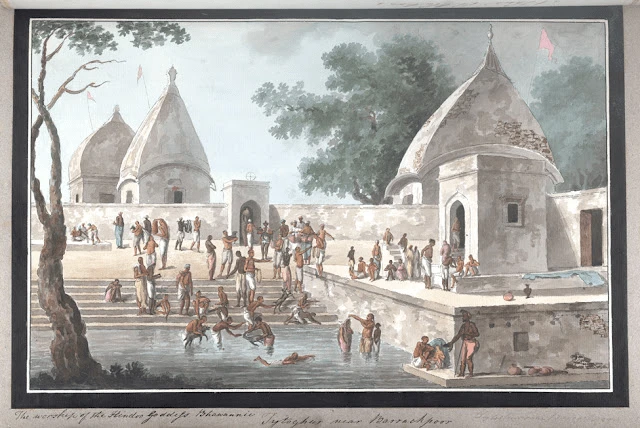
Source: Old Indian Arts
Legends associated with Kali
Kali holds a special place in the Hindu religion due to her ability to both destroy and transform, which has earned her great respect and admiration among the many deities. Her enthralling legends, the intricacies of her origin story, and the influences she has drawn from other religions and cultures have all contributed to a rich and fascinating mythology surrounding the formidable goddess of death.
Origin story
The origin story of the revered Hindu goddess, Kali, is a subject of varying accounts across Hindu mythology. Multiple versions exist that portray her birth or emergence, but one particularly prominent narrative recounts how Kali sprang forth from the forehead of the goddess Durga during a fierce battle against the evil demon Raktabija. The demon possessed the frightening ability to multiply with each drop of his spilled blood, rendering Durga unable to defeat him. To counter this challenge, Durga created Kali, an embodiment of her fierce divine energy. With her awe-inspiring form and unbridled power, Kali fearlessly devoured Raktabija, thus effectively ending his reign of terror and restoring balance and peace. This legend undoubtedly attests to Kali's unparalleled role as the formidable warrior goddess, unleashing her divine energy to combat and ultimately overcome the forces of evil (Cartwright).

Source: Old Indian Arts
The Slaying of Mahishasura
One of the most captivating legends surrounding the Hindu goddess Kali centers around her heroic slaying of the buffalo demon Mahishasura. Legend has it that Mahishasura had been granted a boon that rendered him nearly invincible, causing worldwide chaos and devastation. In response to this dire situation, the gods summoned Kali to confront Mahishasura in a fierce battle. With her formidable prowess and unwavering resolve, Kali emerged victorious over the demon, decapitating him and liberating the world from his oppressive rule. This tale highlights Kali's ferocious aspect as the destroyer of evil forces, symbolizing the triumph of righteousness over wickedness (Story).
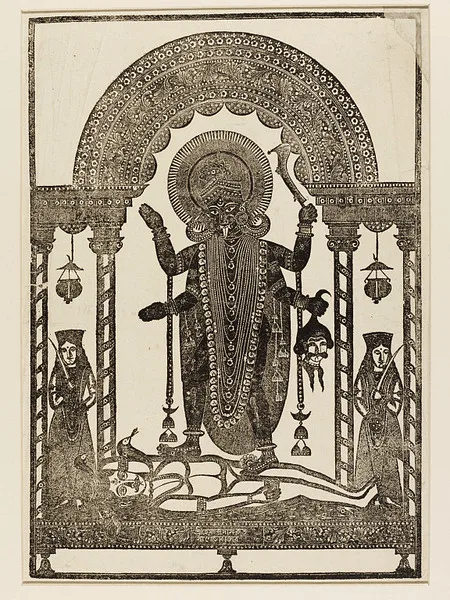
Source: Old Indian Arts
Dance of Destruction
In the fascinating legend of Kali's dance of destruction, the goddess becomes enthralled by her power after successfully defeating all the demons on Earth. Overtaken by the joy of her victory, Kali's unstoppable force threatened to engulf everything in her path. To bring her back to awareness, Lord Shiva, the divine consort, laid down amidst the battlefield, offering himself as a focal point for her attention. In her zeal, Kali unintentionally stepped on Lord Shiva. She realized her mistake at that moment and stuck out her tongue in astonishment. This act signifies Kali's transformation from the destructive aspect of the goddess to her nurturing and compassionate nature. It serves as a reminder of the importance of balance and compassion, even amid immense power and destruction. This legend exemplifies Kali's multifaceted nature, encompassing her divine energy's fierce and nurturing aspects (Natesan).
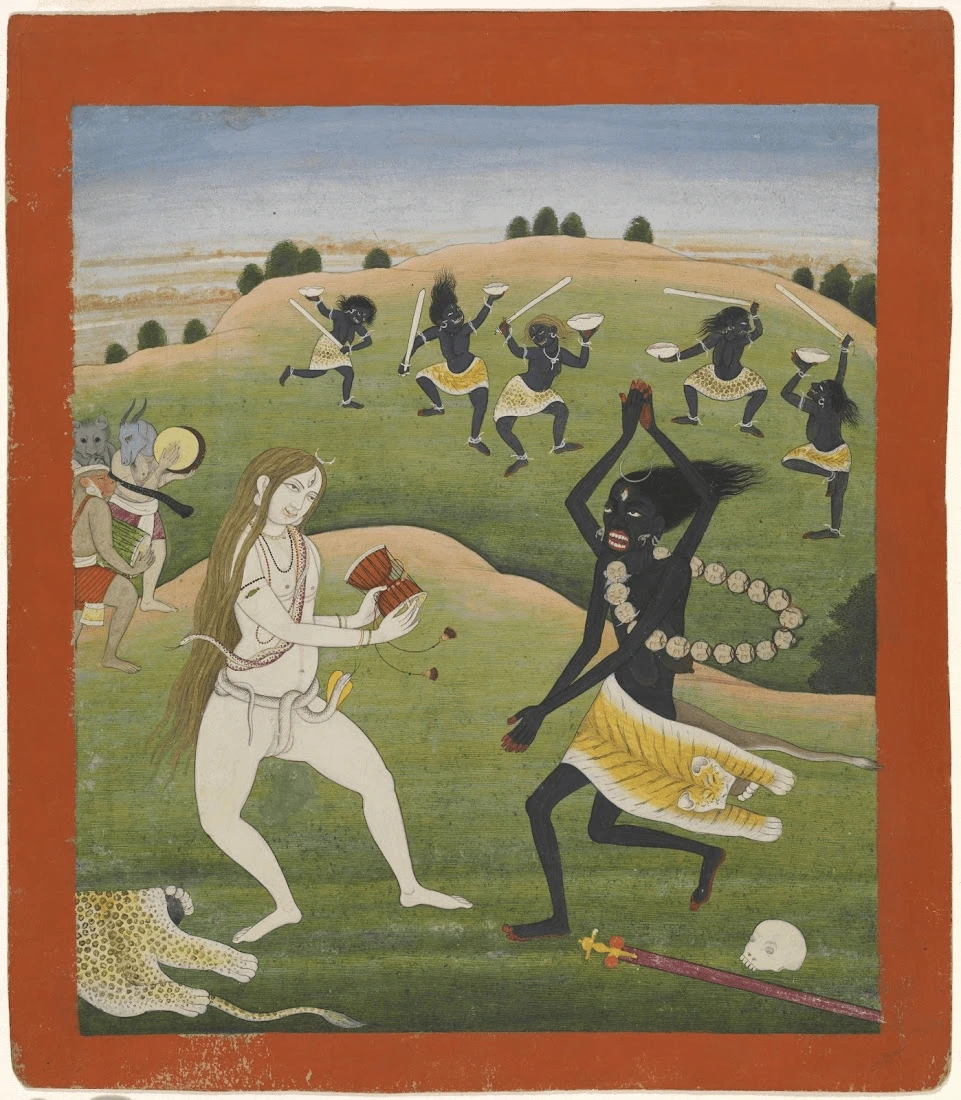
Source: Old Indian Art
Influences of other religions/cultures on Kali
The portrayal of Kali has been dramatically influenced by interactions with other religions and cultures, resulting in intriguing syncretic representations. In certain forms of Buddhism, Kali is equated with the goddess Tara, who embodies compassion and enlightenment. This assimilation reflects the syncretism between Hindu and Buddhist traditions, highlighting the interconnectedness of these belief systems. Kali's assimilation with Tara showcases her compassionate aspect and underscores the shared ideals of compassion and enlightenment across these faiths (Cartwright).
Furthermore, Kali's depiction as the fierce goddess Durga in the Mahayana Buddhist tradition demonstrates the impact of Hinduism on Buddhist iconography. In this context, Kali embodies Durga's powerful and protective qualities, emphasizing her power to conquer evil and defend the righteous. The influence of Hinduism on Buddhist representations of Kali-Durga further highlights the shared reverence for this aspect of the divine feminine.
The syncretic representations of Kali are a testament to the diverse and complex nature of religious beliefs and their ability to evolve. The assimilation of Kali with other deities underscores the interconnectedness of different faiths and the shared values they uphold. Through these syncretic representations, Kali continues to be a revered and multifaceted goddess, embodying both destruction and compassion, fearsomeness and protection, and serving as a symbol of the divine feminine.
Modern appearances
In modern times, Kali remains a revered figure, and her presence is celebrated through various artistic and cultural expressions. Her imagery is often depicted in paintings, sculptures, and religious iconography, symbolizing her ferocity and transformative power. Kali's influence extends to literature, music, and contemporary artworks, where she is celebrated as a symbol of feminine strength, liberation, and empowerment. Her mythology and symbolism resonate strongly with individuals seeking spiritual awakening and transformation in the modern world.
Final thoughts
Kali is a powerful embodiment of destruction and transformation. Her complex nature is revealed through various legends surrounding her origin, her battles against demons, and her dance of destruction. Kali's multifaceted persona is both terrifying and nurturing, highlighting her significance in the spiritual realm. The influence of other religions and cultures has contributed to her perception and recognition, emphasizing her interconnectedness with diverse spiritual traditions. Even in modern times, Kali's symbolism and presence continue to inspire artists, writers, and those seeking spiritual enlightenment, symbolizing each individual's strength and transformative potential. The cyclical nature of existence and the importance of finding balance amidst the destructive and creative forces in the universe are underscored by Kali's presence.
References
Cartwright, Mark. “Kali.” World History Encyclopedia, 21 June 2013, www.worldhistory.org/Kali/.
Natesan, Sivagami. “Ma Kali.” Hindu American Foundation, 20 Nov. 2020, www.hinduamerican.org/blog/ma-kali.
Story, Kali: “The Hindu Goddess Kali: Story, Symbols & Facts - Video & Lesson Transcript | Study.com.” Study.com, 2020, study.com/academy/lesson/the-hindu-goddess-kali-story-symbols-facts.html.
Wikipedia Contributors. “Kali.” Wikipedia, Wikimedia Foundation, 16 Dec. 2018, en.wikipedia.org/wiki/Kali.
Saraswati: Goddess of Knowledge, Music, and Art
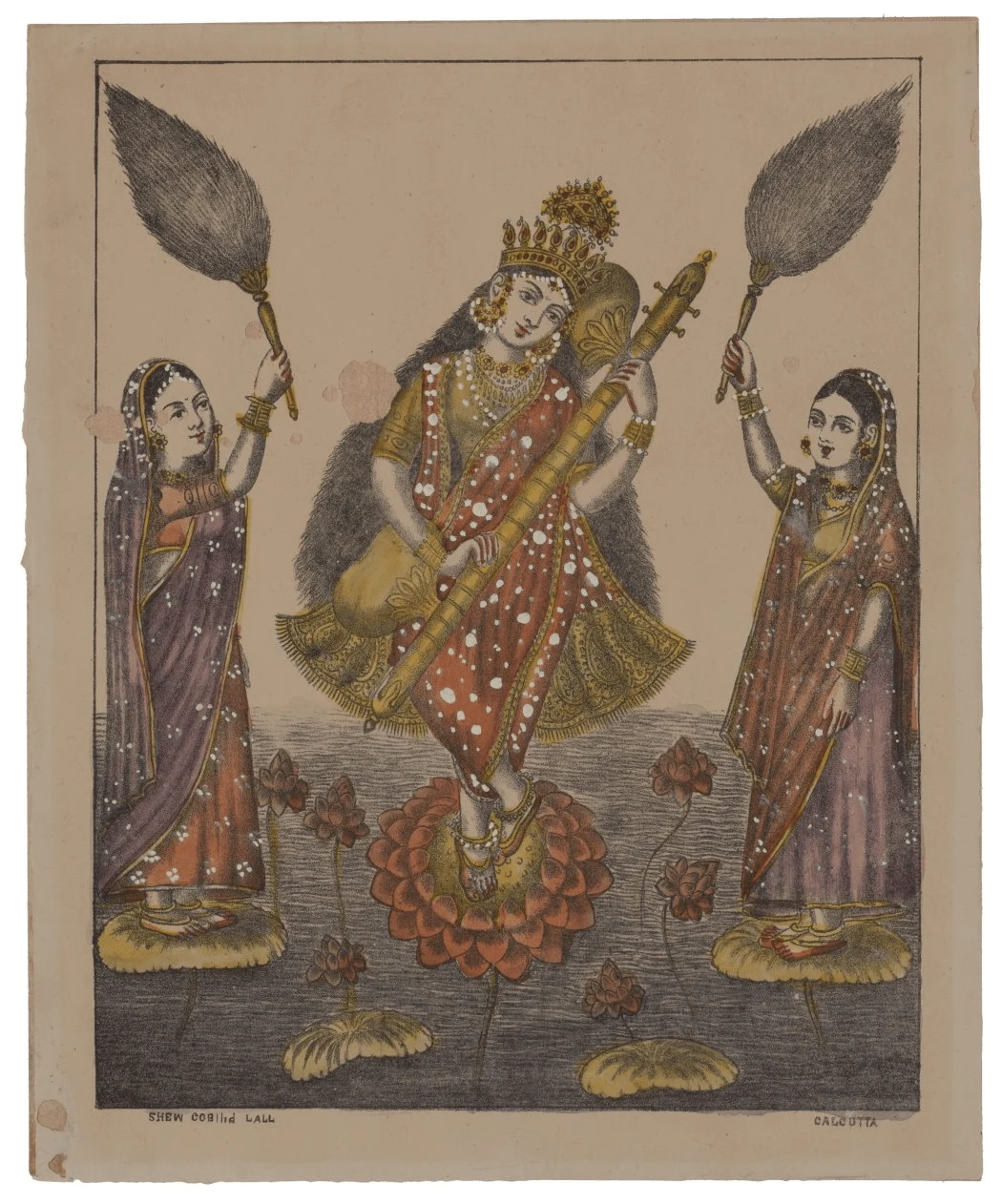
Source: Old Indian Art
Saraswati, the goddess of knowledge, arts, and wisdom, holds an esteemed position in Hinduism. Her influential character is revered by scholars, artists, musicians, and students alike. Known as the bestower of intellect and creative inspiration, Saraswati's role in Hindu mythology is multifaceted. Her marriage with Brahma, the creator god, and her humbling encounter with Lord Shiva has made her character all the more intriguing and sought-after. Her teachings have inspired generations of people seeking knowledge and wisdom, and students especially value her guidance and seek her blessings during exams and academic pursuits. Saraswati's depth and significance have made her an integral part of Hindu culture, and her teachings continue to inspire and guide individuals toward intellectual and creative growth.
Overview of Saraswati
Saraswati, along with Lakshmi and Parvati , is one of the three prominent goddesses in Hinduism. As the offspring of Lord Shiva and Goddess Durga , she symbolizes the union of two divine forces ("Saraswati"). Revered as the deity of learning, wisdom, and education, she is worshiped by students and scholars alike. Many schools and universities in India have statues of Saraswati on their premises, symbolizing the importance of teaching and learning.
In Hindu mythology, Saraswati is also associated with the concept of "vidya," or knowledge, which is believed to be the ultimate goal of human life. She is often depicted as an embodiment of learning, creativity, and inspiration, inspiring people to seek wisdom and enlightenment. Her influence can be felt in India and other parts where Hinduism is practiced.
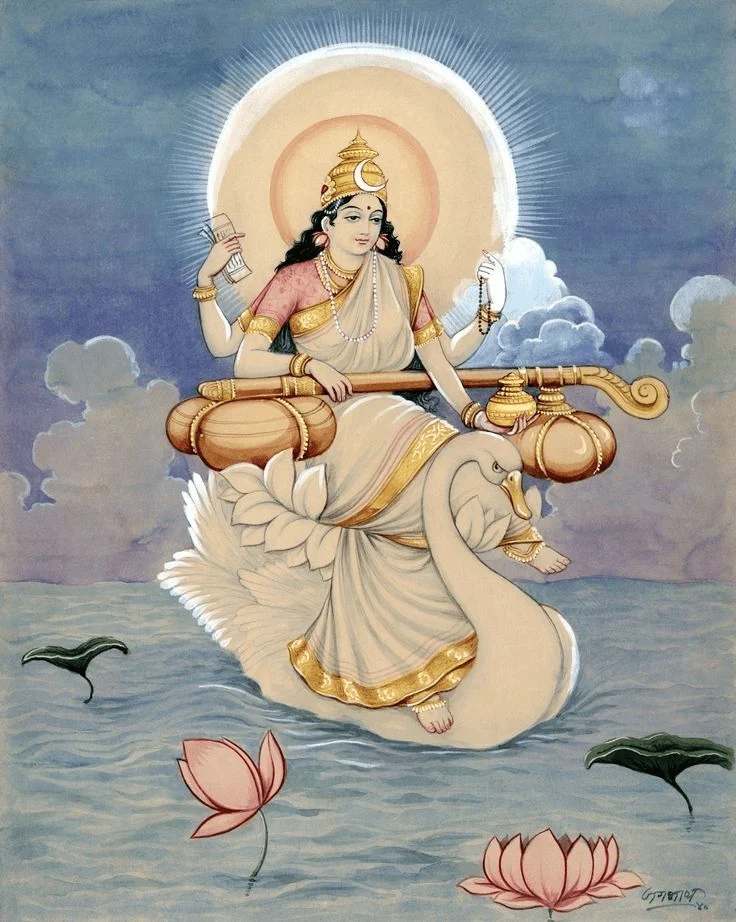
Source: Pinterest
Titles
The Goddess of Speech and Sound
The Bestower of Knowledge
The Giver of Creative Inspiration
Abilities
Saraswati is a deity that embodies many powers, making her a highly esteemed intellectual and a symbol of artistic expression. Her divine essence is believed to bestow profound knowledge and wisdom upon her devotees, allowing them to deepen their understanding of the world and gain insights into the mysteries of existence. In addition to her intellectual prowess, Saraswati inspires creativity, artistic skills, and eloquence, igniting the spark of imagination within individuals (Cartwright). Through her benevolent grace, she grants mastery over various art forms, music, and literature, empowering artists and scholars to excel in their chosen disciplines and reach new heights of artistic brilliance.
As the patron deity of students, Saraswati guides and blesses students on their educational journeys, nurturing their intellectual growth and paving the way for their success. Her guidance is significant for students seeking knowledge and understanding, as she embodies the essence of learning and enlightenment. Her presence in their lives helps them to stay focused on their goals and to remain committed to their studies, even in the face of adversity.
Furthermore, Saraswati facilitates clear and effective communication, essential for success in all aspects of life. She enables individuals to express themselves articulately and persuasively, thus enhancing their ability to connect with others (“Saraswati”). This ability to communicate effectively is vital for those who seek to lead and inspire others, as it allows them to convey their ideas and vision with clarity and passion.
Characteristics
Purity, simplicity, and transcendence are what characterize Saraswati's divine presence. As a graceful deity with a fair complexion and a serene countenance, Saraswati's appearance reflects her tranquil and peaceful nature. Her white garments, which she often wears, symbolize her purity and divine essence. Moreover, the goddess's four arms are significant as they represent her ability to engage in multiple activities simultaneously. For instance, one arm is often depicted playing the veena, while another holds a book, signifying knowledge. The third arm displays a gesture of blessings, while the fourth arm represents the mind. These arms symbolize Saraswati's ability to impart knowledge, creativity, and wisdom to humanity. Saraswati is also often depicted seated on a lotus, which represents her association with spiritual growth and enlightenment. This association with the lotus is due to the flower's unique property of blooming in muddy water while remaining pure and untouched. Therefore, Saraswati's presence on the lotus symbolizes her ability to transcend the material world and attain spiritual enlightenment.
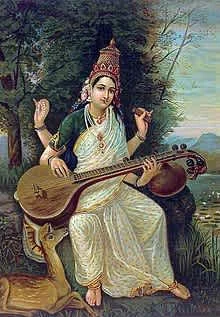
Source: Pinterest
Traits
Saraswati is renowned for having multifaceted qualities that significantly impact humanity. Her serene temperament brings a sense of tranquility among her followers, creating an environment of inner peace and harmony. With abundant compassion and guidance, Saraswati supports those seeking knowledge and wisdom, providing solace and direction in their spiritual pursuits. Her presence stimulates the creative spark within individuals, inspiring them to embrace artistic expression and innovation. Saraswati's intellect and discernment promote critical thinking, fostering the cultivation of analytical skills and intellectual growth. Furthermore, she embodies patience and perseverance, serving as a guiding light for the relentless pursuit of knowledge and lifelong learning. Through her diverse and profound traits, Saraswati continues influencing and uplifting humanity, guiding individuals toward self-discovery, creative exploration, and intellectual development (Cartwright).
Symbols
Saraswati is renowned for her divine essence and attributes. Her association with symbolic representations is significant, as each emblem encapsulates a distinct quality that reflects her character. The veena, for instance, is a musical instrument that symbolizes the harmonious blend of knowledge and artistic expression. It represents the inseparable nature of intellectual pursuits and creative endeavors, emphasizing the importance of balance and the integration of diverse talents. Books are another significant symbol often depicted in Saraswati's hands. It embodies wisdom, learning, and the relentless pursuit of knowledge, signifying the significance of sacred scriptures and the transformative power of education.
The swan is a graceful creature that symbolizes discernment and understanding. It draws from its ability to separate milk from water, highlighting Saraswati's capacity to distinguish truth from falsehood and navigate the complexities of life. The swan is also known for its association with poetry and music, emphasizing Saraswati's connection to the arts and literature. Finally, the lotus flower is renowned for its pristine beauty and represents purity, spiritual growth, and enlightenment. It is a powerful symbol of transcendence and the blossoming of consciousness, signifying the transformative power of Saraswati's teachings (Cartwright).

Source: Pinterest
Festivals and Rituals
Saraswati's worship is observed through various festivals and rituals, with Vasant Panchami being one of the most prominent. This festival is celebrated during spring and is dedicated to Saraswati. Devotees participate in multiple activities to pay homage to the goddess, including offering prayers and seeking her blessings. The festival of Vasant Panchami is a significant occasion for devotees to express their reverence and gratitude towards Saraswati. They place books, musical instruments, and other objects of knowledge before her in educational institutions and households to seek her divine grace and guidance. It is believed that seeking the blessings of Saraswati can lead to success in academic pursuits, as she is the patron deity of learning (Cartwright).
Students, in particular, implore Saraswati for success in their studies and academic pursuits. Vasant Panchami serves as a reminder of the importance of knowledge, education, and the arts in society. The festival highlights Saraswati's role in inspiring and guiding individuals toward intellectual growth and enlightenment. Vasant Panchami is a time for devotees to express their devotion, seek blessings, and enthusiastically celebrate the goddess of knowledge and arts.
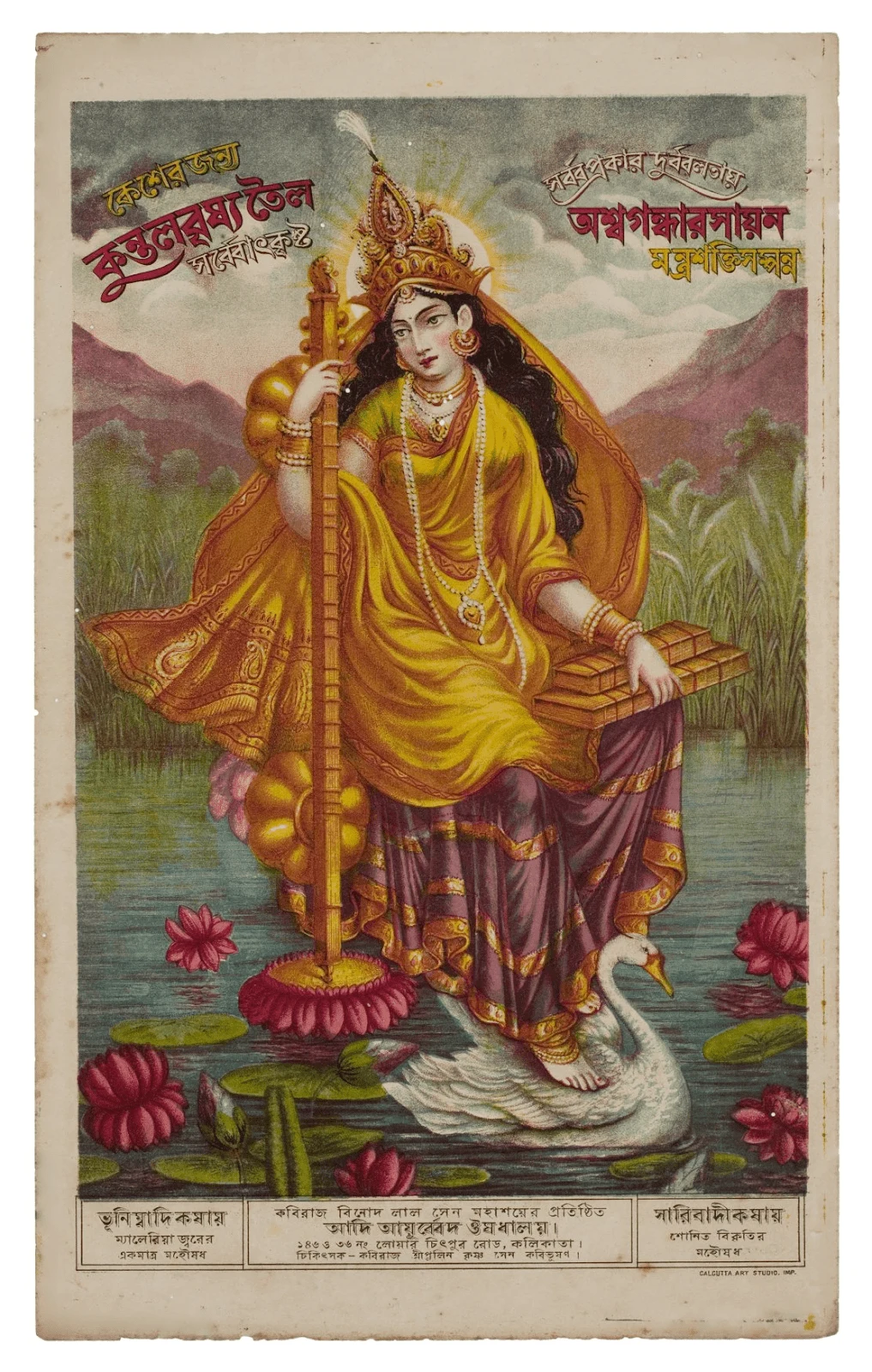
Source: Old Indian Art
Legends associated with Saraswati
The rich and intricate mythology surrounding the Hindu goddess Saraswati is brimming with captivating legends that amplify her importance in Hindu culture. These compelling stories provide us with invaluable insights into her origins, interactions with other deities, and embodiment of various virtues and attributes that give us a glimpse into her divine nature and the vast extent of her influence on different religious and cultural traditions. By delving into these fascinating tales, we can unveil the intricate depths of her mythology and gain a more profound appreciation for the complexities of Hindu beliefs and practices.
Origin story
The origin of the Hindu deity Saraswati has been the subject of considerable interest across various Hindu texts and traditions. According to the Rigveda, one of the oldest sacred texts of Hinduism, Saraswati is portrayed as a mighty river goddess who emerged from the primeval waters alongside other prominent deities. The Rigveda describes her as a goddess of knowledge, music, and the arts, often depicted holding a veena, a musical instrument, in her hands. Saraswati is believed to be the manifestation of the holy Sarasvati River, which once flowed prominently in ancient India (Cartwright). This association with the river highlights her close connection to purity, fertility, and the life-giving force of water, all considered essential in Hindu mythology. The story of Saraswati's origin symbolizes these values. It underscores her significance in Hindu mythology as a patron of knowledge, creativity, and water's vital role in sustaining life.

Source: Pinterest
The Marriage of Saraswati and Brahma
According to Hindu mythology, Saraswati's association with Lord Brahma, the creator of the universe, is a significant legend. As the story goes, Brahma is captivated by Saraswati's beauty and elegance, prompting him to propose to her. However, Saraswati, the embodiment of wisdom and purity, declined his advances and evaded his pursuit by fleeing in various directions. Brahma, undeterred, manifested multiple heads to see her from all angles, demonstrating his unwavering determination to be with her. Eventually, the two were united in celestial marriage, symbolizing the harmonious union of creativity and knowledge. This legend highlights Saraswati's esteemed position as the consort of Brahma. It underscores her significance as the goddess of arts and wisdom in Hindu mythology, emphasizing the importance of creativity and knowledge ("The Hindu Goddess Saraswati").
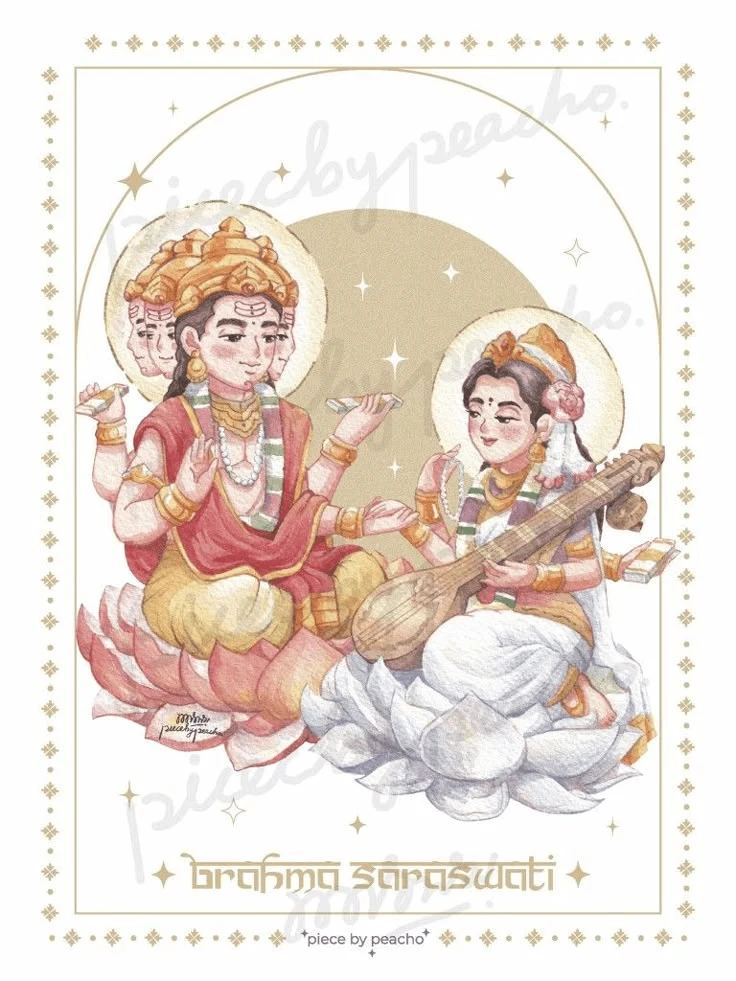
Source: Peacho
Saraswati and Lord Shiva
Another memorable legend would be one involving Lord Shiva, one of the principal deities in Hinduism. According to the story, Saraswati, the goddess of knowledge, became excessively proud of her vast wisdom and began to boast about it. To humble her, Lord Shiva took the guise of a wild, disheveled ascetic and challenged her to a knowledge competition. Despite her extensive knowledge, Saraswati could not answer Shiva's enigmatic questions, and she soon realized the extent of her arrogance.
In an admirable display of humility, Saraswati acknowledged her defeat and sought forgiveness from Lord Shiva. Impressed by her humility, Shiva blessed her, and Saraswati became his consort, securing her place as a revered goddess in Hindu mythology. This legend highlights the significance of humility and the transformative power of accepting one's shortcomings while underscoring the significant relationship between Saraswati and Lord Shiva ("Saraswati").
Overall, the story of Saraswati and Lord Shiva emphasizes the importance of staying humble and recognizing the value of knowledge without boasting or arrogance. The legend reminds all to remain grounded and seek understanding with humility and respect.
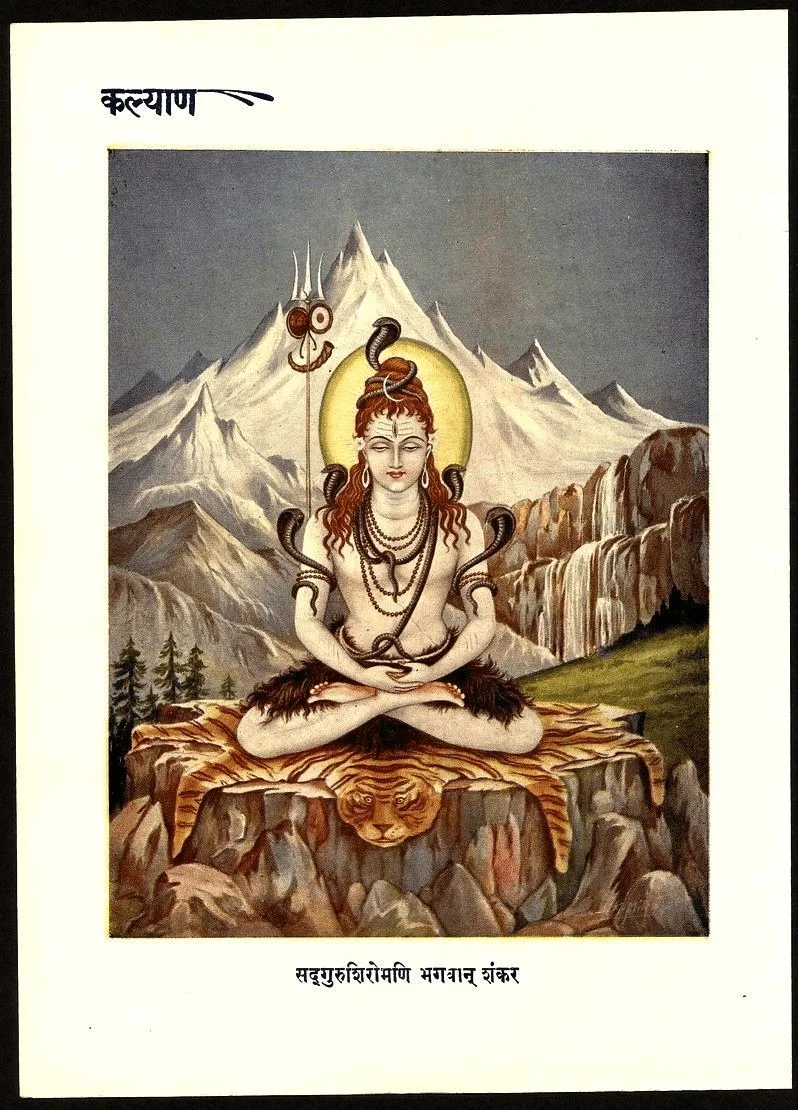
Source: Old Indian Art
Influences of other religions/cultures on Saraswati
The influence of Saraswati is not limited solely to Hinduism, as she has also found her place in other religious and cultural traditions. In Buddhism, Saraswati is revered as the bodhisattva Saraswati, representing knowledge and wisdom. Similarly, in Jainism, Saraswati is known as Sarsuti, a goddess associated with learning and the arts. These cross-cultural influences have led to variations in the depiction and worship of Saraswati, further showcasing her adaptability and universal appeal (Cartwright).
Modern appearances
Saraswati continues to hold a significant place in modern times. Devoted followers celebrate her divine presence in various forms during contemporary Hindu festivals and cultural events. Images and idols of Saraswati are prominently displayed, and her blessings and guidance are sought by students during their academic pursuits, especially during exams. Many educational institutions dedicate special rituals and prayers to the goddess in reverence. Apart from the academic world, Saraswati is revered by artists, musicians, and writers for her ability to inspire and bestow creative prowess upon them. Her timeless relevance and influence on the Indian psyche testify to her enduring legacy.
Final thoughts
Throughout the ages, the virtues and attributes of Saraswati have continued to inspire seekers of knowledge, creativity, and spiritual enlightenment. Her divine presence is evident in every facet of Hindu culture, from the ancient myths of her origins to the modern-day worship that honors her as one of the most revered deities. Whether one is a scholar seeking wisdom, an artist seeking inspiration, or a spiritual seeker pursuing guidance, Saraswati remains an essential source of inspiration. Her influence extends far beyond the Hindu community, as people from all walks of life have come to appreciate and revere her for the wisdom and grace she embodies. All in all, Saraswati is a beloved figure whose legacy will continue to inspire future generations.
References
Cartwright, Mark . “Saraswati.” World History Encyclopedia, 25 Nov. 2015, www.worldhistory.org/Sarasvati/.
“Saraswati.” Wikipedia, 20 Apr. 2020, en.wikipedia.org/wiki/Saraswati.
“Saraswati.” Encyclopedia.pub, encyclopedia.pub/entry/37946. Accessed 22 July 2023.
“The Hindu Goddess Saraswati .” Study.com, 2022, study.com/learn/lesson/hindu-goddess-saraswati-wife-brahma.html.
Sita: The Goddess of Courage and Purity
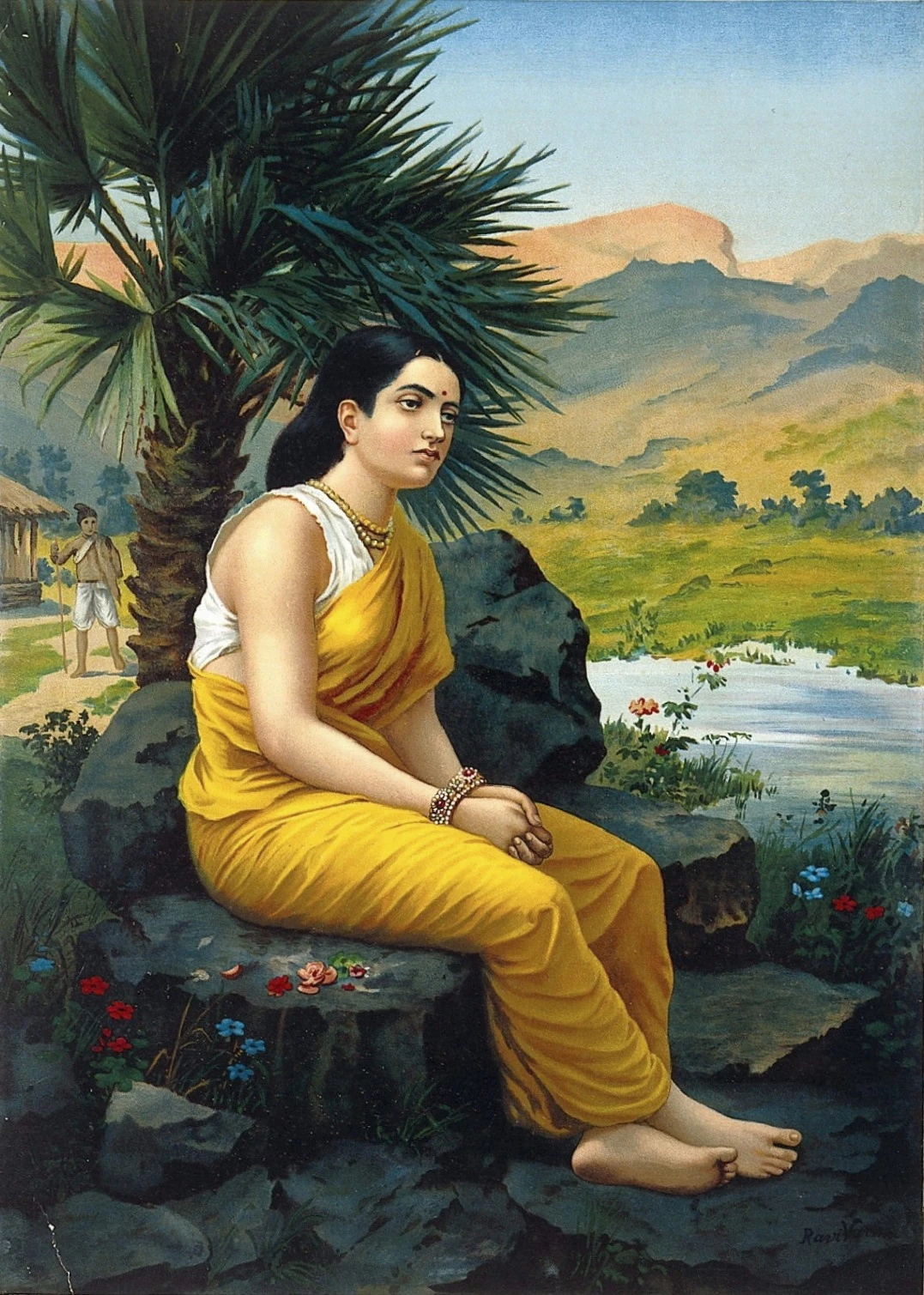
Source: Wikipedia
Sita, the Goddess of Courage and Purity, is a revered and iconic figure in Hindu mythology and the ancient epic Ramayana. Widely known for her unwavering loyalty and virtue, she is admired by millions across generations. Her story has been passed down through various means, including oral tradition, sacred texts, and cultural expressions, and her divine connection with Lord Rama is especially significant as it represents the eternal values of love, sacrifice, and unwavering faith. As a result, Sita's legacy has endured through the ages, inspiring countless individuals to embody her honorable qualities and strive towards a life of devotion and purity.
Overview of Sita
Sita has many names, including Vaidehi and Janaki. The goddess holds a significant place in the revered Hindu scripture Ramayana, which depicts the heroic deeds of her husband, Lord Rama, and their divine love story.
Embodying womanly elegance and wifely virtue, Sita's devotion to Lord Rama transcends all boundaries, and she is considered an esteemed example of a devoted wife in Hindu culture. In fact, many believe she is the reincarnated form of Lakshmi, the consort of Lord Vishnu. Choosing to reincarnate herself on Earth to provide humanity with a role model of virtuousness, Sita's story continues to inspire millions of people worldwide ("Sita - New World Encyclopedia").
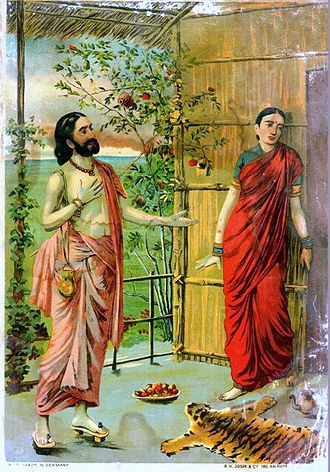
Source: Wikipedia
Titles
Daughter of Mother Earth
Princess of Videha
Wife of Rama
Abilities
Goddess Sita's divine nature and virtue are deeply rooted in her exceptional abilities. Her unwavering devotion and patience towards Lord Rama are at the forefront of these abilities. Throughout their marriage, Sita's steadfast love and loyalty toward her husband exemplify her unparalleled patience and dedication amidst trials and tribulations. Additionally, her self-sacrifice is a testament to her profound commitment to righteousness. By choosing to accompany Lord Rama during his fourteen-year exile, she willingly abandoned the comforts of royalty to support her husband, showcasing her unwavering determination and sacrifice. Despite the challenges thrown her way, Sita's inner strength remains unshaken. Her ability to endure hardships with grace and resilience reflects her deep inner fortitude and unwavering spirit, inspiring all who encounter obstacles in their own lives ("Sita – Hindu Goddess of Courage and Purity").
The extraordinary abilities of Goddess Sita transcend her role as a mythical figure, providing devotees with timeless lessons in devotion, sacrifice, purity, and inner strength. Her story continues to captivate and inspire individuals, serving as a reminder of the boundless power of love and righteousness.
Characteristics
The depiction of Goddess Sita as a paragon of beauty and grace is a testament to her divine origins and celestial nature. Her physical appearance and overall bearing are often described in awe-inspiring terms, with Indian art, sculpture, and iconography portraying her as a radiant woman with pleasing facial features. She is fair-skinned and possesses long, black hair, which may be covered by an elaborate headdress that signifies her royal status. As befits her social status, she is frequently adorned with gold bracelets and anklets, and she wears a sari that symbolizes her chaste and virtuous nature. Her countenance is typically anthropomorphic, though she may be depicted with additional arms in images that seek to emphasize her incarnation as Lakshmi. In religious iconography, she is usually situated on the left-hand side of her husband, Rama, alongside other vital characters from the Ramayana, such as Hanuman, Lakshmana, her twin sons, and occasionally even Ravana. These images often depict significant scenes from the Hindu epic (“Sita - New World Encyclopedia”).
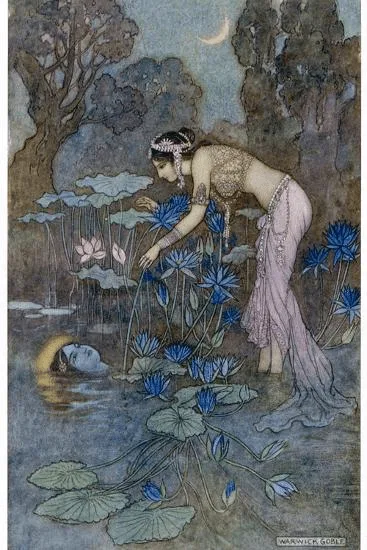
Source: ART
Traits
An unwavering devotion to Lord Rama defines Sita's character. Her selfless love and steadfast loyalty to her divine consort are examples of spiritual connection, inspiring devotees to deepen their devotion. Despite facing trials and tribulations, Sita demonstrates remarkable courage and resilience, remaining true to her principles and upholding righteousness.
The goddess’s unwavering strength in the face of adversity is a guiding light for those navigating challenging circumstances, encouraging them to remain steadfast in their moral convictions. Sita embodies divine virtues such as compassion, devotion, and courage, making her a perpetual source of inspiration and a model for humanity. Her timeless traits encourage devotees to cultivate a noble and virtuous character in their own lives, making her an enduring symbol of courage and purity in Hindu mythology ("Sita – Hindu Goddess of Courage and Purity").
Symbols
Sita, a revered figure in Hindu mythology, embodies the essence of Earth's fertility, abundance, and well-being. According to Hinduism, she is the daughter of Mother Earth, conceived through the union of a king and the land (Wikipedia Contributors). This association emphasizes her inherent connection to nature and nurturing qualities, positioning her as a compassionate and caring mother figure to all living beings.
The sacred fire, Agni, is inextricably intertwined with Sita's purity, as her miraculous birth came about through a divine offering made in the holy flames. Agni symbolizes her religious origins and underscores her status as a celestial being born of divine grace and sanctity.
Together, these symbols create a profound tapestry, capturing the essence of Goddess Sita's character and significance in Hindu mythology. As such, she inspires devotees to seek purity, nurture life, and recognize the divinity within each being.

Source: Wikipedia
Festivals and Rituals
Devotees of the Hindu goddess Sita partake in various festivals and rituals to honor her divine presence and seek her blessings. One such significant festival is Sita Navami, which falls on the ninth day (Navami) of the waxing moon in the Hindu month of Vaishakha. This auspicious occasion commemorates Sita's birth anniversary and allows devotees to express their reverence and devotion. On this day, devotees observe fasts, visit temples, and recite hymns praising the goddess, seeking her divine grace and blessings ("Sita – Hindu Goddess of Courage and Purity").
Another important festival is Rama Navami, which marks the wedding anniversary of Lord Rama and Goddess Sita and is celebrated on the final day of a larger nine-day festival called Vasanthotsavam (the "Festival of Spring"). During this festival, worshippers perform marriage celebrations for small statues of Sita and Rama in their homes and take them onto the streets in a grand procession in the evening. Temples are adorned with elaborate decorations, and readings of the Ramayana take place. The occasion serves as a time for spiritual reflection and for Hindus worldwide to direct their prayers to Lord Rama, Goddess Sita, and their close companions ("Sita - New World Encyclopedia'').
These festivals and rituals showcase devotees' profound devotion and love for Goddess Sita. They reaffirm the timeless tale of the Ramayana and provide an opportunity for seeking divine blessings from the goddess of courage and purity.
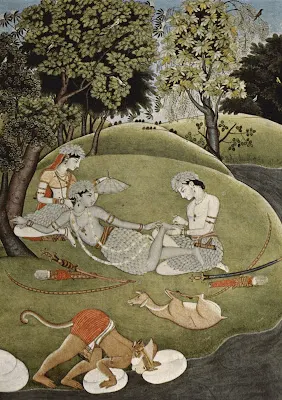
Source: Old Indian Art
Legends associated with Sita
Sita's story has been interwoven into the tapestry of ancient history. From her fiery entrance into the world to her union with Rama, she has faced exile and kidnapping. Nevertheless, her legacy has persisted through the ages, and her tales have been passed down from generation to generation. She has become an enduring symbol of strength and purity, a testament to the power of a story that stands the test of time. With roots stretching back to antiquity, Sita's legends inspire and captivate audiences today.
Origin story
The origin story of Goddess Sita is steeped in various iterations, as depicted in many sources. According to the revered Valmiki Ramayana, Sita is deemed the incarnation of Goddess Lakshmi, the consort of Lord Vishnu, who assumed human form to be with him during his seventh avatar as Lord Rama. This divine union between Sita and Rama was not merely for personal love. Instead, it was infused with a grander purpose - eradicating evil and reinstating Dharma (righteousness) on Earth.
The divine birth of Sita is attributed to a sacred ritual where King Janaka of Mithila performed a yajna (sacrificial offering) to seek progeny. During this yajna, Sita emerged from the depths of the sacrificial fire, bearing witness to her divine origins and association with Agni (fire), further emphasizing her celestial nature.
This age-old narrative portrays Goddess Sita as embodying divine love, virtue, and selflessness, tasked with a divine mission to establish righteousness and conquer evil. Her extraordinary birth and divine purpose elevate her status in Hindu mythology, making her an inspiration for millions, even in contemporary times. ("Sita - New World Encyclopedia").

Source:Sanatanadhara.
Sita’s Swayamvara
One of the most celebrated and enduring legends surrounding Goddess Sita is the tale of her Swayamvara, a customary practice in ancient India where a princess could choose her life partner from a gathering of suitors. The Ramayana narrates a remarkable version of Sita's Swayamvara, transforming it into a test of strength and bravery.
During the event, a colossal bow, believed to be Lord Shiva's, was placed before the assembly of suitors. The task was to lift and string the bow, a feat deemed impossible for ordinary mortals due to its immense weight and divine origin. As the princes attempted in vain, their limitations were evident. However, the scene took an extraordinary turn when Lord Rama, accompanied by his loyal brother Lakshmana, approached the bow. With effortless grace and divine prowess, Rama lifted and strung the formidable bow, astonishing everyone present. So strong and adept was Rama in performing the task that he broke the mighty bow in the process. With that, not only was Rama's vigor evident to King Janaka, but he had also stolen the heart of Sita. So the two were wed ("Sita, Hindu Goddess: Story & Description | Who Is Sita in Ramayana?").
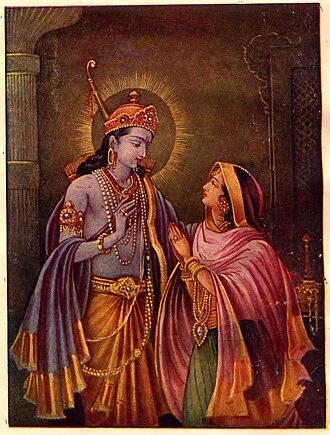
Source: Wikipedia
Exile and Abduction
Goddess Sita's life is marked by an essential and moving episode involving her exile and abduction by the demon king, Ravana. Following their wedding, circumstances arose that led Rama to believe it was his duty to spend a period of exile in the forests of Dandakaranya. Sita dutifully accompanied him during his fourteen-year exile, demonstrating her unwavering commitment and loyalty to her husband. Tragedy struck when Ravana, captivated by Sita's exceptional beauty and virtue, deceitfully posed as a mendicant and forcefully abducted her to his kingdom of Lanka.
Despite the dire circumstances and the emotional turmoil caused by her separation from Rama, Sita remained steadfast in her devotion to her beloved. Throughout her captivity, she demonstrated immense courage, resilience, and unwavering faith in her husband's eventual rescue (Wikipedia Contributors).
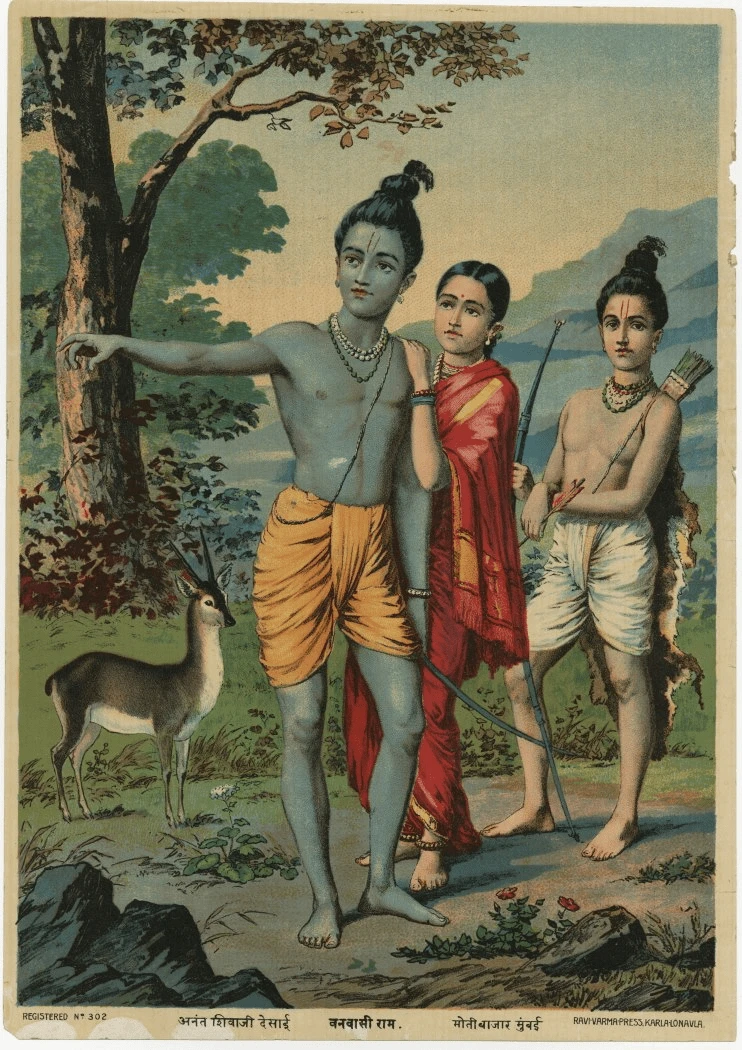
Source: Old Indian Art
Influences of other religions/cultures on Sita
Throughout history, the character and representation of Goddess Sita have been shaped by various cultures and religions. One notable influence on her portrayal is Jainism, a religious tradition emphasizing Sita's status as an enlightened soul. According to Jain texts, Sita embodies non-violence and self-control, serving as a moral role model for humanity and exemplifying Jain's virtues and ethical values.
The Jain perspective on Sita elevates her spiritual status, presenting her as an enlightened person who transcends cultural and religious boundaries. This view underscores the timeless relevance of Sita's virtues, which inspire individuals to seek moral and spiritual guidance across different belief systems. The portrayal of Sita in Jainism highlights her embodiment of Jain's values and ethical principles, emphasizing the importance of leading a virtuous life.
Overall, the Jain influence on Sita's portrayal adds a unique and valuable perspective to the understanding of this revered goddess. It showcases the universality of Sita's integrity and expands her significance beyond the confines of Hinduism. The depiction of Sita in Jainism underscores her moral character, making her a source of inspiration for individuals seeking guidance in their pursuit of spiritual and ethical growth ("Sita – Hindu Goddess of Courage and Purity").
Modern appearances
Throughout time, the story of Goddess Sita has served as a significant source of inspiration to countless filmmakers, writers, and artists worldwide. Her unwavering courage, devotion, and resilience have been captured in numerous movies, shows, and art forms in India and beyond. Several notable examples include:
The Ramayana TV Series (1987-1988): A top-rated Indian television series directed by Ramanand Sagar brought the epic Ramayana to life on the small screen. Actress Deepika Chikhalia portrayed the iconic character of Sita, representing the virtuous goddess with great poise and grace ("Ramayan (1987 TV Series)").
Sita Sings the Blues (2008): An animated film by Nina Paley that reimagines the Ramayana from Sita's perspective, blending mythology with modern storytelling. The movie explores love, loss, and empowerment themes through various animation styles ("Sita Sings the Blues").
Sita: An Illustrated Retelling of the Ramayana (2019): A graphic novel by Devdutt Pattanaik that provides a visually captivating portrayal of the Ramayana, emphasizing Sita's character and significance in the epic ("Sita: An Illustrated Retelling of the Ramayana").
The story of Goddess Sita remains an enduring and inspiring tale, captivating audiences worldwide and continuing to be reimagined in new and innovative ways.
Final thoughts
The tales of Sita, the revered Hindu deity known for her unyielding courage and unblemished purity, have captivated and motivated individuals across generations and cultures. Her unwavering devotion, immense strength, and indomitable resilience have made her an emblem of empowerment and righteousness. Despite the passage of time, Sita remains an iconic figure, serving as an unwavering beacon of hope and inspiration for those seeking to imbue their lives with courage and conviction. Her story continues to be retold, ensuring that the legacy of this revered goddess endures for all eternity.
References
“Ramayan (1987 TV Series).” Wikipedia, 10 July 2023, en.wikipedia.org/wiki/Ramayan_(1987_TV_series). Accessed 31 July 2023.
“Sita - New World Encyclopedia.” Www.newworldencyclopedia.org, www.newworldencyclopedia.org/entry/Sita.
“Sita – Hindu Goddess of Courage and Purity.” Www.exoticindiaart.com, www.exoticindiaart.com/blog/sita-hindu-goddess-of-courage-and-purity/.
“Sita, Hindu Goddess: Story & Description | Who Is Sita in Ramayana?” Study.com, 2023, study.com/academy/lesson/sita-hindu-goddess-story-description-ramayana.html. Accessed 31 July 2023.
“Sita Sings the Blues.” Wikipedia, 5 Feb. 2021, en.wikipedia.org/wiki/Sita_Sings_the_Blues.
Durga: The Powerful Warrior Goddess
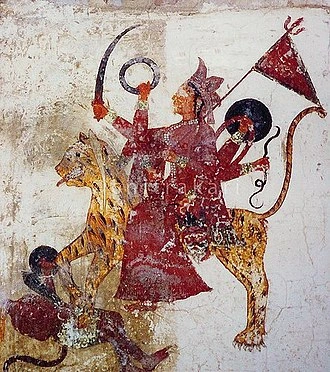
Source: Wikipedia
Durga, the Hindu goddess, is an awe-inspiring deity who embodies the essence of feminine strength and courage. In Indian mythology, Durga holds a significant position among the highest divine beings, and millions of devotees worship her with utmost devotion. As the supreme goddess, she epitomizes piousness and protects her followers, and serves as a symbol of feminine power. Her conquests are legendary, from slaying the buffalo demon Mahishasura to creating Kali. The unwavering determination of the warrior goddess has earned her the reverence and admiration of countless believers.
Overview of Durga
Durga is a divine symbol of feminine power and energy, considered as a form of the mother goddess Devi. The mother goddess Devi is a primordial goddess in Hindu mythology and is responsible for creating the universe. As one of the central forms of Devi, many Hindus worship her as the ultimate source of all life (Mantooth).
As a formidable source of nature, her name is as powerful as her heart, the name Durga derives from the Sanskrit language, and it translates to "the invincible" or "the inaccessible" (Wikipedia Contributors). Durga goes by many names, including Ambika, Bhavani, and Mahishasura Mardini. From mythology to art and literature, the warrior goddess Durga is an integral part of the rich tapestry of Hinduism.
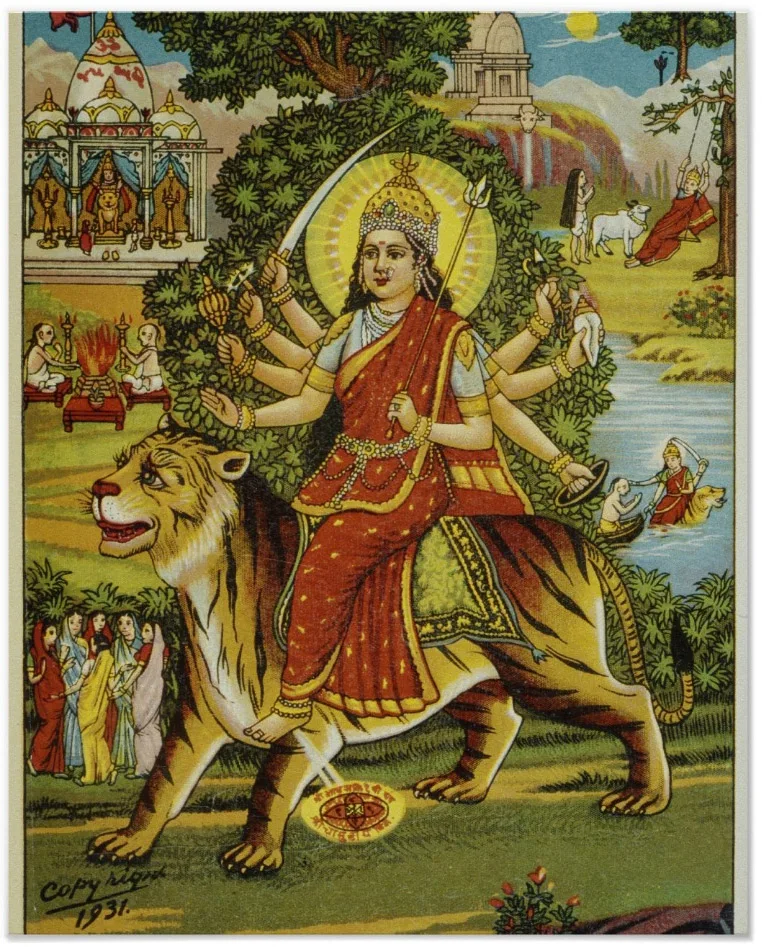
Source: Old Indian Art
Titles
The Fierce and Wrathful One
The Slayer of the Buffalo Demon
The Divine Mother
Abilities
Durga is the ultimate power behind the universe and is the universe itself. From her comes everything, and from her, all things exist. Durga embodies both matter and mind and is Prakriti, which is the manifestation of the entire physical world. According to the Devi Mahatmya, a sacred Hindu text, the goddess Durga is the universal mother who nourishes and sustains all living beings. Within each living creature, Durga manifests as the vital energy that procreates, supports, and gives each species a unique identity. Apart from being the source of all creation, Durga is also Maya. Maya is the illusionary energy that makes people think of themselves as separate from universal consciousness. However, only when the divine Shakti meets the Shiva within a person can they experience the state of expanded consciousness. This process is catalyzed only by the powerful Durga, whose awe-inspiring powers sustain the universe (sakhasuadm).
Characteristics
Durga is depicted as a radiant goddess with a serene expression and a majestic aura. Her golden complexion radiates divine light, symbolizing her celestial nature. With multiple arms, typically eight or ten, she represents unparalleled strength and the ability to accomplish many tasks. In many illustrations, she is atop a lion, which displays her fearlessness and authority, harnessing immense power as she protects against evil forces. These physical characteristics embody her divine beauty and commanding presence and inspire devotion from her worshippers.
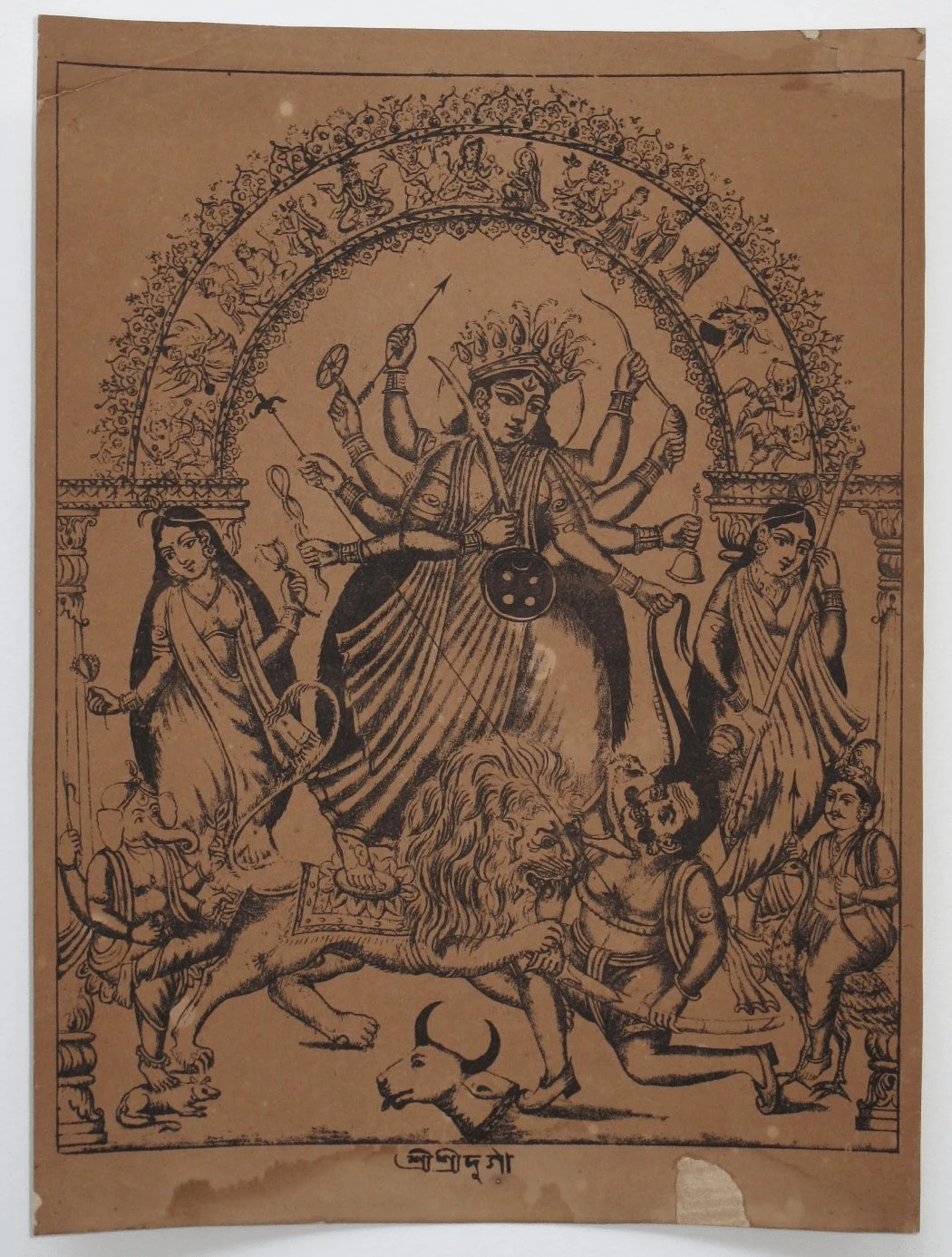
Source: Old Indian Art
Traits
Durga is a goddess with varying attributes that sustain her role as a nurturer and protector. However, her unrelenting courage in the face of evil is why many worship her. Durga fearlessly takes on any challenge that comes her way and never backs down. Aside from her courage, Durga is also known for her compassionate nature. The goddess extends her loving care and protection to those in need, always ready to lend a hand to anyone who requires her help. Durga's compassionate heart reflects her deep understanding of the human condition, and her ability to connect with people on an emotional level is truly remarkable.
Another defining aspect of Durga's character is her motherly love, which she embodies with grace and beauty. Durga's unconditional love for her devotees is akin to how a mother loves a child. Nurturing and guiding her followers on the path of righteousness, she always provides them with the support and encouragement they need to overcome life's challenges. This motherly love makes Durga such an inspiring figure to her devotees, who look up to her as a source of strength and guidance in their lives.
Symbols
Durga's various symbols represent her power, protection, and divine presence. The trident, for example, signifies her ability to destroy evil and reminds devotees of her transformative energy. The conch shell represents the primordial sound of creation and purifies the environment, while the lotus symbolizes purity, beauty, and spiritual enlightenment, embodying Durga's divine attributes. Lions are also another symbol she is often illustrated with as they represent the desire for lust and embody strength.

Source: Old Indian Art
Festivals and Rituals
Durga is honored through various festivals and rituals celebrated by Hindus worldwide. The most significant is Durga Puja, a ten-day festival dedicated to the goddess. Elaborate ceremonies, devotional songs, and vibrant processions mark this occasion. Another important festival is Navaratri, a nine-night celebration where people worship different aspects of Durga. Devotees observe fasts, perform special prayers, and engage in cultural festivities to seek the blessings of the goddess (Wikipedia Contributors).

Source: Old Indian Art
Legends associated with Durga
Durga is a highly revered figure in Hindu religious practices, with her rich mythology of tales captivating millions of devotees worldwide. Stories such as Durga's slaying of Mahishasura and her battle against Raktabija have contributed to her significant place in traditional Hindu beliefs.
Origin story
The origin story of Durga varies across different sources and traditions, reflecting the diversity of Hindu mythology. However, the most widely accepted version of her creation tells of the gods' inability to defeat the buffalo demon Mahishasura, leading to their merging of energies to manifest Durga. In the Devi Mahatmya, a sacred Hindu scripture, the legend narrates how the invincible Mahishasura wreaked havoc on Earth, causing mayhem and terrorizing the gods and humans alike. All the Hindu gods then unified their energies and created Durga, bestowing her their divine weapons and powers on her. With her unparalleled strength, the warrior goddess waged a fierce and relentless battle against Mahishasura, ultimately defeating him and restoring peace and order to the world (Chandel). This tale symbolizes the power of collective divine forces and the triumph of good over evil, making it a crucial part of Hindu religious culture (Kumar).
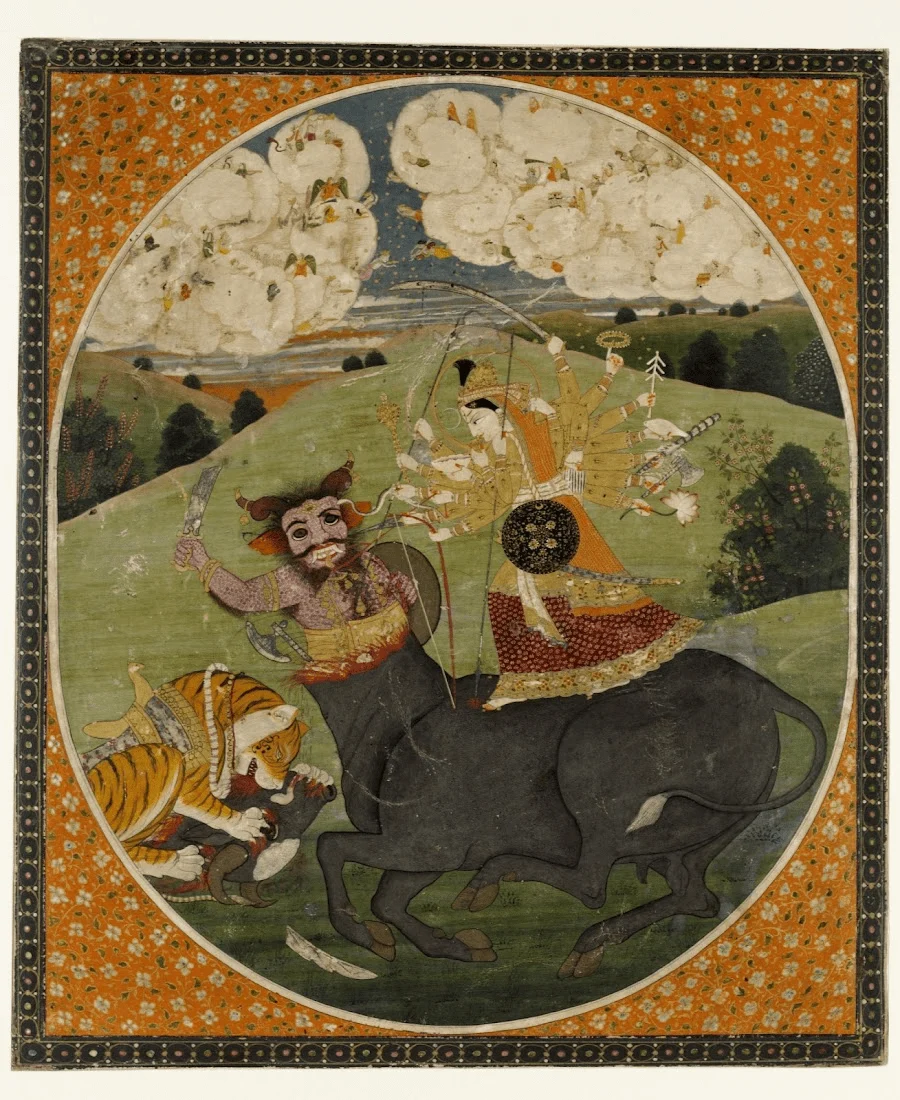
Source: Old Indian Art
Durga and the Battle against Raktabija
The story of Durga and Raktabija is a captivating tale from Hindu mythology that has intrigued people for generations. Raktabija was a fierce demon with the unique ability to replicate himself from every drop of his blood. This ability made him a formidable adversary for Durga, who was determined to defeat him. The battle between Durga and Raktabija was epic, with both parties fighting tirelessly and relentlessly. Every time Durga would strike Raktabija, his blood would spill on the ground, giving rise to new demons, which only made the fight more grueling and prolonged. Despite her exhaustion and weariness, Durga refused to give up and kept fighting with all her might.
The story of Durga and Raktabija is a testament to Durga's unwavering determination and strategic brilliance. It is a reminder that anything is possible with perseverance and willingness to think outside the box. Durga's tactical approach to the battle and her ability to create Kali in response to Raktabija's unique power has made her one of the most revered goddesses in Hinduism, admired by many for her strength and unwavering spirit (Mantooth).

Source: Exoticindiaart
Influences of other religions/cultures on Durga
Throughout history, Durga has been influenced by various religions and cultures. Shaivism and Shakta traditions have heavily influenced the worship and mythology surrounding Durga. Shaivism is the worship of Lord Shiva, and in this tradition, Durga is considered his consort and an essential aspect of the divine feminine. However, the Shakta emphasizes the worship of the divine mother as the supreme deity, with Durga occupying a central position. These influences have shaped the multifaceted perception and recognition of Durga within Hinduism. Durga is revered for her strength, courage, and ability to conquer evil, establishing her a symbol of empowerment and protection for many Hindus (Wikipedia Contributors).
Modern appearances
In today's world, Durga continues to be an object of worship and admiration, celebrated in various forms of artistic expression such as paintings, sculptures, and digital art. Her depiction as a warrior goddess, equipped with divine weapons and seated atop a lion, symbolizes her persona. Devotees manifest their devotion to Durga through prayers, hymns, and chants, seeking her divine protection and blessings. Dedicated temples to her serve as places of worship, drawing in devotees who offer flowers, incense, and prayers as acts of reverence. Despite the advancement of modern times, her presence remains vibrant and inspires millions of devotees who uphold her reverence through festivals, art, and devotional practices even today.
Final thoughts
Durga is a timeless embodiment of feminine power and divine love. Her stories and legends have captivated devotees for generations, and her origin stories are as diverse as they are fascinating. From her slaying of the demon Mahishasura to her victory over Raktabija, Durga's legendary feats have earned her a place of reverence in the hearts and minds of her followers. As a symbol of inspiration, she reminds us of the inner strength and courage that lies within each of us, offering protection and guidance on our spiritual journeys. Her enduring presence continues to inspire and uplift those who seek her divine grace.
References
Chandel, Alisha. “10 Most Important Stories of Goddess Durga.” TemplePurohit - Your Spiritual Destination | Bhakti, Shraddha Aur Ashirwad, 28 May 2022, www.templepurohit.com/10-important-stories-goddess-durga/.
Kumar, Nitin . “Durga - Narrative Art of a Warrior Goddess.” Www.exoticindiaart.com, Apr. 2001, www.exoticindiaart.com/article/durga/. Accessed 16 July 2023.
Mantooth, Katie. “Hindu Goddess Durga: Origins, Symbolism, and Significance.” Study.com, 2022, study.com/academy/lesson/hindu-goddess-durga-history-names.html.
sakhasuadm. “Durga – the Shakti.” Spiritual Blogs of Sakhashree, 21 Sept. 2022, sakhashree.com/durga-the-shakti/. Accessed 16 July 2023.
Wikipedia Contributors. “Durga.” Wikipedia, Wikimedia Foundation, 5 Nov. 2019, en.wikipedia.org/wiki/Durga.
Like this project
What the client had to say
I've had a good experience working with thewritingnook. Very prompt with quality final deliverables.


Renaissance Rachel ✨, Grounded Insights
Aug 21, 2023, Client
Posted Sep 28, 2023
A client hired me to write several informative blog posts centered around the Hindu goddesses Parvati, Radha, Kali, Saraswati, Sita, and Durga.
Likes
0
Views
4.3K
Timeline
Jul 12, 2023 - Aug 21, 2023
Clients

Grounded Insights




